You probably already know what branding is.
It’s the look and feel of a company, like its logo and website, as well what people think of it. In other words, the brand represents the company’s reputation.
A classic example of great corporate branding is Nike. The swoosh logo, the tagline “Just Do It”, and the companies ads that feature real athletes make up the brand.
As soon as you see a Nike ad, you recognize it.
But how can that help you as a person?
It’s the same principle. You are your personal brand.
Who you are online is who you are as a business.
Your content becomes your voice as a company, and your brand is built by how successfully you market that brand to your customers.
A perfect example of content marketing in business is Tim Ferriss.
He’s known for his bestselling book, “The Four Hour Workweek,” as well as his blog and podcast. He’s one of the world’s most popular business strategists.
Guess why he’s so well known?
His book, blog, and podcast all serve one purpose: to build his personal brand and leverage it into successful business ventures.
The core value of his brand is helping others realize their dreams, so everything he writes or says is focused on that.
He posts comprehensive and useful content that truly helps others, and in turn, makes people want to buy from him.
But don’t panic. You don’t have to be a famous author like Tim to develop a solid content marketing strategy for your business.
Anyone can do it!
In this post, I’m going to break down everything you need to know about creating a content marketing strategy for your personal brand.
It’s a really fun process, so let’s dive right in.
Start with authenticity
The most important thing to remember when creating your content marketing strategy is to be authentic.
People can tell if you’re being fake.
Everything you say, do, and write should be consistent with your personality, your values, and what you’re passionate about. If it’s not, the deception will come across in your content.
A strong personal brand creates trust between you and your audience. A recent study found that 50% of buyers buy on belief or their trust in the brand.
And 67% of first-time customers will make a purchase based on your values if those values align with their own.
Your personal brand is all about you, so be yourself.
You know the old saying, “People buy from people they like?” It’s true.
But your personal brand isn’t there to just push sales for you or make you money. It’s the essence of who you are and why you do what you do, and that’s worth more than money.
Your personal brand brings humanity back into a business.
This is true for businesses of all sizes, from a one-man show to a multi-million dollar company with hundreds of employees.
You don’t need to be an expert in your field at first. You can learn as you go like I did with marketing and SEO.
The key is to be authentic to who you are right now. If you’re a beginner, be a beginner.
Document your journey to the top and bring your audience along with you.
Starting small and building over time is a much better strategy than pretending you already have all the answers.
When I first started blogging, I didn’t know half the things I know now. That’s okay! What matters is I remained consistent with my content marketing and learning new things.
Now, this blog brings in over 600,000 visitors per month!
Define your brand goals.
The first step to creating your content marketing strategy is writing down your goals.
Ask yourself how your personal brand could help you.
Will it help you land a better job?
Will it help you sell more products or services for your business?
Will it help you become a thought leader in your industry?
Whatever your big goal is, write it down.
Yes, actually write it down on paper or on your computer!
Your content marketing strategy should be a real document that you, or anyone else creating content for you, can pick up and read.
Only 32% of B2B content marketers have a documented strategy. It’s important to document it so that you, or anyone creating content for you, can easily reference it and ensure every piece of content supports your goals.
Documenting your strategy is proven to yield better results, so don’t skip writing it all down.
Next, you need to set smaller, more specific goals.
How will you get to that big goal of selling more products?
To do that, you’ll need to:
- Increase your brand awareness through quality content
- Drive traffic back to your website
- Get visitors to sign up for your emails so you can market to them
- Convert those leads into sales
Those goals still seem pretty big, right? Break them down even further.
For example, to “increase your brand awareness”, list out what you need to do to make that happen:
- Publish one blog post per week
- Share your content on social media regularly
- Connect with influencers to get them to share your content and build a relationship
Better, right?
Your specific goals will probably change over time, but your overall goal should stay the same.
For example, a few years ago, I published a new blog post at least once a day, sometimes two.
Now, I publish at least three new posts per day!
My overall goal has remained the same though, and always will: I’m here to help you succeed with online marketing.
How I do that might change, but that’s always my goal.
Start a blog
Once you have your goals figured out, it’s time to take action.
Blogging is a huge part of content marketing.
You can choose to market written content through a blog, start a YouTube channel, or launch a podcast… or do all three, like I do.
But if you’re just starting out, a blog is the easiest way to get your content out there and start building your brand.
Businesses that blog get 67% more leads than those that never blog.
But the most important part of blogging isn’t the number of leads you get — it’s the trust factor.
81% of consumers trust the information they read on blogs.
Trust is crucial to your personal brand.
I’ve already covered all the technical details of how to start a blog, so I won’t reiterate all that here.
But there are a few things you need to make sure you document for your content strategy.
Blog consistently.
Write down your publishing schedule and stick to it. This is really important for building your audience.
How many times have you visited a blog, liked it, but returned weeks later to find nothing new?
After a few of those experiences, you’ll probably give up and not bother coming back again.
Content creation is responsible for 85% of your content marketing success, so make sure you’re spending most of your time and energy on publishing fresh content regularly.
You could start with one post per week and go up from there, but the key is to start somewhere and stick with it.
Optimize your blog for social media sharing.
I don’t have to tell you that social media is important for growing your blog.
When your readers share content on their social media networks, those shares put your content in front of new eyes. When this happens on a large scale, it’s called “going viral”.
There are many factors that go into creating viral content.
Infographics are proven to get more shares than other forms of content, with list posts coming in at a close second.
I’ve written extensively on how to generate traffic with infographics and how to create great list posts for your blog.
But there’s one thing all viral posts have in common: Someone shared them to start with.
Your content can be very shareable, but without an easy way to do encourage sharing, your blog readers won’t bother!
Luckily, there are a bunch of free tools that allow you to optimize your blog for social shares.
If you’re using WordPress, I recommend installing the AddThis plugin. It’s free and has a clean, modern look.
Here’s how to add it to your blog.
To download the plugin, click here and then click the blue Download button.
It will download a zip file. Then, log in to your WordPress dashboard and click on Plugins -> Add New from the left menu.
Click on Upload Plugin at the top of the screen and select the zip file you just downloaded. Then click Install Now.
Click on Activate Plugin.
You’ll see this notice to configure the settings for AddThis. Click on Configuration options.
On this screen, you have a few options for how the social sharing buttons will be displayed on your blog. You can set them however you like, but I definitely suggest turning on the mobile toolbar feature.
Just click on the toggle button to activate it.
The mobile toolbar floats on the bottom of the screen so your mobile visitors always have a quick way to share your content.
With mobile traffic now making up over 55% of all website traffic, it’s important to optimize your site for those visitors, including how they share your content.
Now that your blog is set up for content marketing success, let’s continue with creating your strategy.
Figure out who you’re writing for
After you’ve defined your goals and set up your blog, you need to decide who you want to attract.
This will depend on your overall goals, but if you’re selling a product or service, you want your target customers to read your content.
But who is your target customer? What are they looking for?
Having this key information about your customer is called creating a customer persona.
A persona describes your ideal customer. Everything from their age and occupation to their motivations, likes/dislikes, pain points and more should go into a persona.
You should have a persona for each type of customer you want to attract.
For example, your target customers might include middle-aged moms, but you might also target younger childless females. You need to create one persona for each customer.
The middle-aged mom is going to have different needs and motivations than the younger, child-free woman. She’ll have less time and more responsibilities.
The younger woman has a busy life, too, but in a different way.
Accounting for these differences is what makes your customer personas really useful. When writing, refer to them often to ensure all your content is in line with what that target customer needs and wants.
Of companies who achieve their sales goals, 65% have documented customer personas that have been updated in the past six months.
Here’s an example of a detailed customer persona.
Now let’s walk through the process of making your own customer persona.
Start with the basics.
Write down the basic demographic information for your target customer.
Are they male or female? Young, old, or both? Where do they live? What is their approximate household income? What do they do for a living?
It makes it easier to picture who you’re selling to when you create them on paper.
Add their motivations.
Go a little deeper with your customer.
What do they want to accomplish in life? What are their goals?
For example, if your target customer is a broke college student, his or her main goal may be to graduate with a great GPA.
After graduation, their goal is probably to land a well-paying job.
But if your target customer is a middle-aged man, he’s probably hoping to buy a larger home, get a prestigious promotion, help his kids through school, and accomplish other high-level goals.
Think about what your product or service does for your customer and what would make them want it.
A good example of a business adapting to the motivations of different types of customers is McDonald’s.
In 2016, the company found that its outdated tactics for attracting customers weren’t working as well on the millennial generation.
Millennials wanted fresher products and more customization options.
McDonald’s responded by launching digital terminals that allowed customers to create their own burgers. The company also added new, trendier products like the Sriracha Big Mac, which capitalized on the popularity rise of hot sauce in recent years.
These changes accounted for a 4% revenue growth in the first quarter of 2017. This was the most McDonald’s had grown in over a year.
By understanding what Millennials wanted in a fast-food experience, McDonald’s was able to attract more of the market, while still retaining their older customers who liked things the way they were.
Identify customers’ struggles.
Now that you know the type of person you’re targeting and what they want, you need to tap into what’s bothering them the most.
This is called a pain point. It refers to the problem the customer is having.
Your product or service is the answer to the customer’s pain points.
For example, if you create small business accounting solutions, you need to solve the problems your target customers have with other solutions.
Wave does a great job of this with its free accounting software.
Its bank connections automatically track your income and expenses, and you can send out invoices and accept payments via credit card.
The product is aimed at small business owners who don’t have time to spend hours a week on bookkeeping. It also targets SMBs that lack the money to hire a professional bookkeeper.
Wave’s website speaks directly to this customer persona.
To find your customers’ pain points, look at what you’ve written for your persona already and ask yourself a few questions.
- What is this person’s daily routine like?
- What are this person’s goals?
- What’s the most frustrating part of this person’s day?
- What’s this person’s least favorite part of his or her job?
You should be able to solve each of these pain points with your product or service.
Then, you need to clearly communicate those solutions to your target customers with your content.
You could have just one target customer or 10 or more customer personas, but you need to know each of them in detail.
Write useful content.
Once you know who you’re talking to, you need to write truly useful content for them.
That means you must create content that answers a question, demonstrates how your product or service solves their problem, or teaches them something new.
It takes seeing your content 5 to 7 times, on average, for a person to remember your brand.
There are many forms of content out there, but my favorite is blogging.
If you approach writing content for your blog from a position of wanting to help your customers, you will be miles ahead of the competition.
Don’t think of it as a sales tool, or as a way to make money (at least right away).
Be genuine in wanting to help people. That authenticity will attract people to your content and your brand.
I’ve written extensively on how to produce high-quality blog content, and how to promote and market your content.
Write guest posts on leading websites
Writing blog posts for other websites is called ‘guest posting’ or ‘guest blogging,’ and it’s a key piece of your content marketing strategy.
You may be wondering why you’d want to spend time creating valuable content for other people, but it has several benefits.
It increases your authority.
Guest posting on major websites like Forbes or Entrepreneur shows that you know your stuff.
When people see an article by you on those sites, it immediately adds legitimacy and trust to your knowledge and brand.
They may not know about you, but financial industry people read the Wall Street Journal every day, right?
If your target customer works in that industry, writing for the Wall Street Journal would be a smart way to get their attention.
They’ll think of you as an expert. If they visit your website or see you somewhere else, they’ll remember reading your article in the Wall Street Journal and have faith in your knowledge and abilities.
That’s your personal brand in action.
Of course, you don’t need to write for just Forbes or the Wall Street Journal. The places where you guest blog will depend on who your target customers are and where they hang out.
It drives traffic to your website.
When people read your article on other sites, it’s usually accompanied by a small section like this, called a byline:
Bylines usually link back to your website and include your job title or role, like Adam’s above.
Most posts also feature a short author biography at the bottom of the post, like this.
When people click over to your website from these sections, they’re already interested in what you have to say.
Once they’re on your site, they could choose to sign up for your email list or follow you on social media. Both are activities that help grow your personal brand.
It’s good for SEO.
If you’ve read my blog for awhile, then you know all about the positive effects of link building on SEO.
Having high-quality backlinks increases your organic search ranking.
A backlink is a link to your website from another website.
Guest blogging increases your backlinks, because every time you write a new guest post, you can link back to your own site.
Getting links from high domain authority sites like Forbes are worth a lot of SEO value.
Silvio Porcellana grew his website traffic by 20% just through guest posting.
For his efforts of writing 44 posts for 41 different publications, he managed to gain 5 points for his domain authority. That’s huge for a few months of work!
Know your keywords
Just like you need to know who your target customer is, you also need to know what your target SEO keywords are.
These are the phrases your target audience types in search engines to find content.
But how do you find those keywords?
I’ve written this complete guide to doing SEO research, or you can watch this video to learn how to do keyword research in under 60 seconds.
Once you have a list of keywords, write them down in a spreadsheet. Refer to the list every time you write a new piece of content to ensure you’re using at least a few of them.
You should have a fair number of long-tail keywords as well.
Long-tail keywords are SEO keywords that are three or four words long, and they’re very important for ranking.
This graphic from Yoast illustrates what a long-tail keyword means.
The more specific the keyword, the longer the tail.
A free tool to find good long-tail keywords is Google’s Keyword Planner.
Open it up, and click on ‘Search for new keywords’.
Enter your main topic and website URL, then click Get Ideas at the bottom.
You’ll see the search traffic information for the phrase you typed in, as well as ideas Google is giving you for good long-tail keywords.
Some of them may not be great, like “content strategie” misspelled above, but keywords like “online marketing ebook” or “best way to learn digital marketing” might be a good fit for you.
Get active on social media
This applies to both sharing your content to social media networks and posting on social media yourself.
Make sure you’ve set up a profile on all the basic networks: Facebook, Twitter, LinkedIn and Google Plus.
Depending on what industry you’re in, you could also set up a profile on niche sites like Houzz, Behance, Dailyburn and more.
Here are some tips for optimizing your social media presence.
Use the same profile photo.
Choose a professional headshot as your profile photo and use it on all your social networks.
This will help visitors remember your face and recognize you across different platforms.
I use this one for mine:
Share your content.
This one goes without saying, but make sure you regularly share your content on your channels.
62% of people get their news from social media networks.
Facebook is still the world’s most popular social network, with over 79% of American adults actively using the platform.
Instagram, Pinterest, LinkedIn and Twitter are prominent, as well.
For the most reach, you should share your content to all the networks that you’re on. But this data tells us that you should definitely be on Facebook as one of those networks!
Build relationships.
Don’t just promote your content on your social networks. Take the time to connect with others.
A great way to do this is to join private groups on Facebook or LinkedIn.
On Facebook, you can discover groups by searching for a topic in the top bar.
Then click Groups.
Click on a group name to check it out.
Most Facebook groups are private, or ‘closed’, meaning you have to join it to see any content.
When you click Join, the group owner will approve your request, which can take a few hours.
On LinkedIn, it’s a similar experience.
Log in to LinkedIn, and search for your topic at the top of the screen. Make sure you click the Groups filter.
All LinkedIn groups are private until you join. Click Ask to Join and check back later when the group owner has approved your request.
Most groups send an email when this happens.
Once you get added to a few groups, make sure you’re offering real value and being helpful and not just promoting your own content.
Take the time to answer people’s questions, offer insight to debates, and compliment others for their good work.
Use consistent visuals
Just like using the same profile photo on social media helps others recognize you on different platforms, using consistent visuals in your content does the same for your brand.
Your brand has a lot of visual and graphic elements, including:
- Logo
- Headshot
- Social media post graphics (Facebook, Twitter, etc)
- Images on your blog
- Infographics
- Colors
- Fonts
Take some time when setting up your personal brand to establish the style for all these items.
You can even write all this information down in a brand style guide.
Style guides ensure you’re staying consistent because they list everything for you, or for anyone else who contributes to your brand.
This guide includes what fonts and colors you’ll use, and can also include examples of graphic styles.
You might think this is a waste of time, but did you know that color increases brand recognition by up to 80%?
That’s why I picked my signature orange color for my site.
I use orange for headlines and buttons, and as an accent color everywhere.
When you see an image like this on social media or one of my videos, you may not exactly think to yourself, “Oh, it’s orange, it must be Neil Patel!” But subconsciously, your brain is already thinking of my brand.
Color also factors into more than just memory.
Christina Baldassarre did an experiment with the shade of red and the font used in her subscribe buttons. The results were pretty crazy!
If you’re not great at design, hire a graphic designer to set up some basic brand guidelines for you.
They can create a logo for you, pick colors and fonts, and even set you up with some templates to use for social media graphics.
Investing in your image is worth it for your brand. I mean, you wouldn’t wear sweatpants to a wedding, right?
It pays to showcase your best self to the world when it comes to your content.
If your budget is tight, you can find affordable graphic design services on Fiverr.
Or, you could hire a local graphic design student to work for you. They won’t charge as much as established designers, and they can use your project in their portfolio. It’s a win-win.
If you want to do it yourself, you can use free tools like Canva to create just about any graphic elements you need.
Having high-quality visuals makes your brand look professional and become more memorable.
Pay attention to analytics
Google Analytics can tell you if your content marketing strategy is succeeding or not. It might also give you ideas to help you improve.
If you don’t already have it installed on your site, learn how to set up Google Analytics.
Today I just want to share one quick way to judge the success of your content, and it’s super easy.
Login to your Google Analytics account, then click on Behavior on the left-hand side.
Click on Site Content and All Pages.
This will display the most popular content on your website for the selected time period. Here’s mine for the past 30 days.
This list will tell you what content your readers liked the most.
Pay attention to what people are reading, and write more content on those subjects.
Another great way to find out what people like reading is paying attention to your blog or social media comments.
Jasper left this great comment on one of my posts about Analytics.
His comment gave me the idea to write a post about bounce rate and how to cut it down in your content.
Listen to your readers! They’re a great source of inspiration and new ideas.
Be personal while still being professional
This can be a tough one.
Your personal brand should be in line with how you talk and act with others, but you need to be careful that you’re not being too casual or unprofessional either.
What’s professional for one person is not the same for another.
For example, Wendy’s recently got a lot of attention for how it handled customer service on Twitter.
Tongue in cheek humor like that is risky, and when done incorrectly can ruin a business.
In Wendy’s case, the tweets went viral, and they gained a lot of positive attention.
Especially this one, which was their most popular Twitter post of the week.
With 43% of social media users sharing posts because they find them funny, this strategy worked for Wendy’s.
The week-long campaign of replying to users with humorous answers earned Wendy’s a huge jump in followers.
The key is to know your brand voice and what you stand for and ensure that those qualities come across effectively in all your communications, whether online or offline.
For Wendy’s, its young demographic and history of being a challenger to the big brands made this use of social media fit into their overall content strategy.
What your brand looks like online will likely be different from Wendy’s, but you get to decide what your voice sounds like.
Conclusion
Content marketing is an important part of every business, especially when you’re establishing your new personal brand.
If you only remember one thing from this article, I ask you to remember to just be yourself.
It’s really the most important thing for your brand.
You’ll also need to stay consistent with publishing new content, while also ensuring that your visuals are on-brand.
Re-evaluate your content marketing goals every six months.
Make sure all your content fits into those goals. When you write, do so in a way that appeals to your target customer…
…which you have a persona for, right?
It takes hard work and consistency to build your personal brand, often without any results for at least a few months.
Some marketers say you should spend only 20% of your time creating content and 80% of your time promoting it, known as the Pareto principle.
But it doesn’t matter how much time you spend on something if you’re not getting any results.
Most inbound marketing campaigns, including building a brand with content, take about 6-9 months to see valuable results.
Don’t throw in the towel too soon by expecting huge results overnight.
Do you already blog for your personal brand? What are your best tips for achieving your brand goals with content marketing?


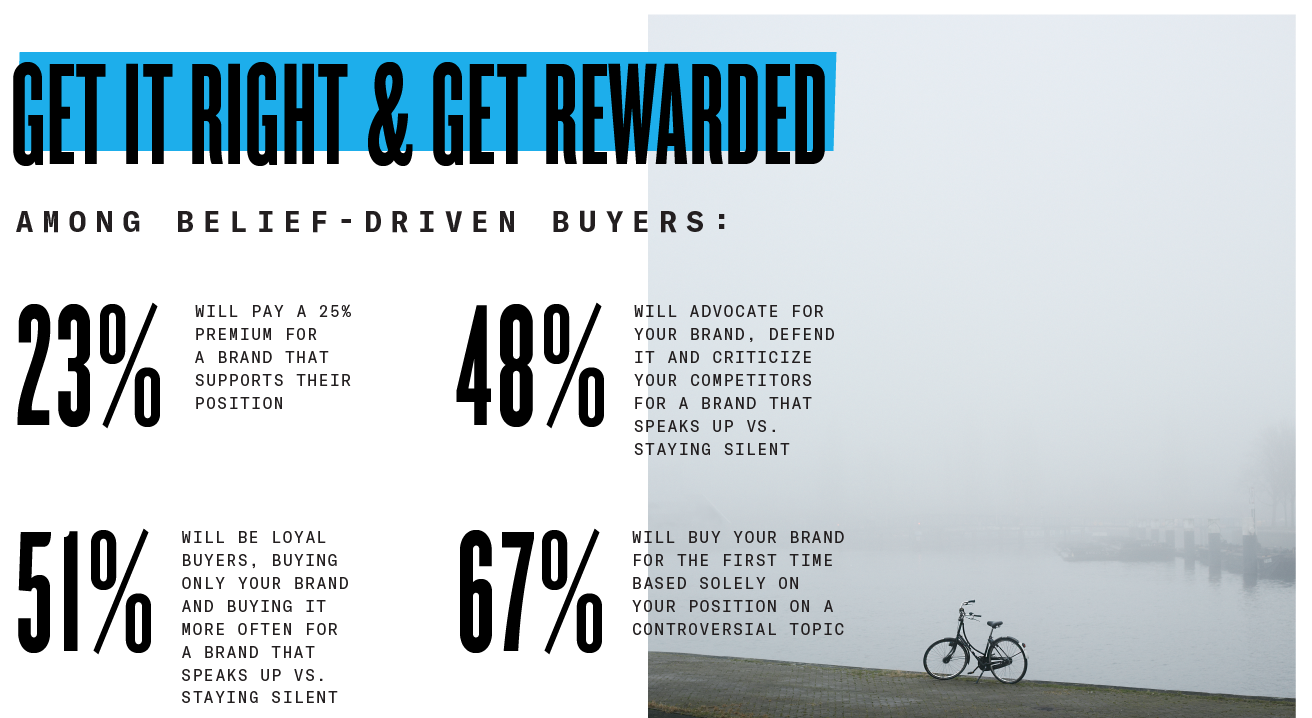
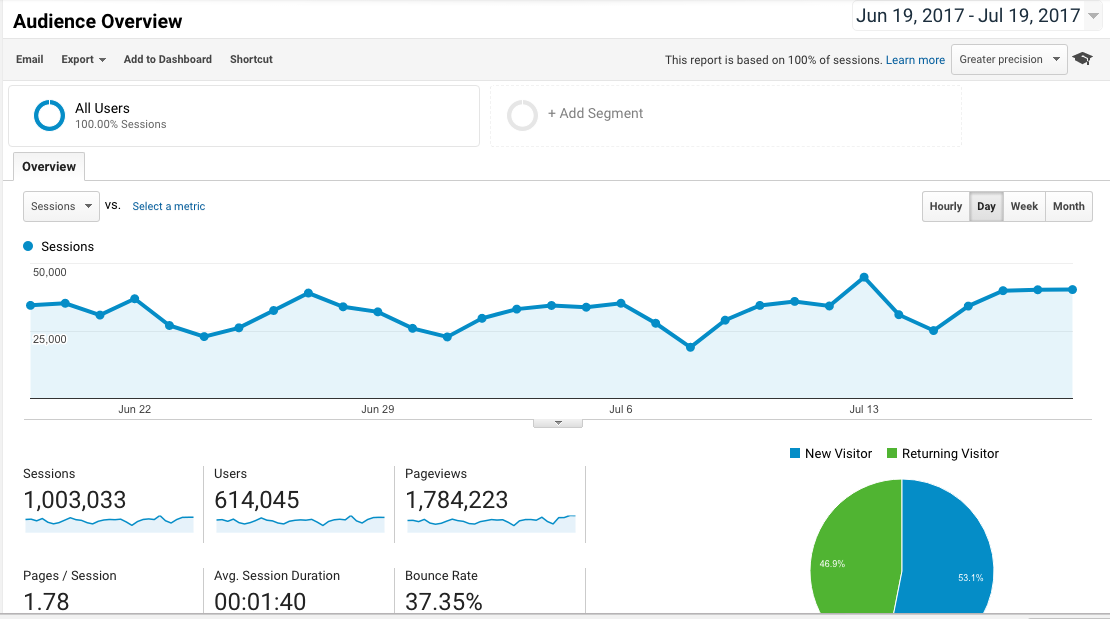
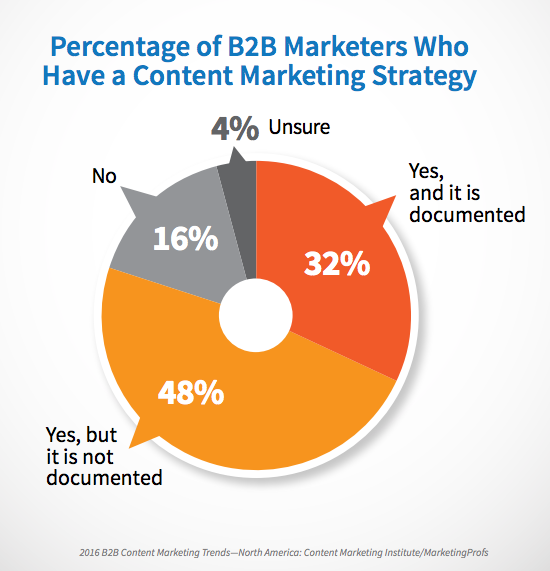
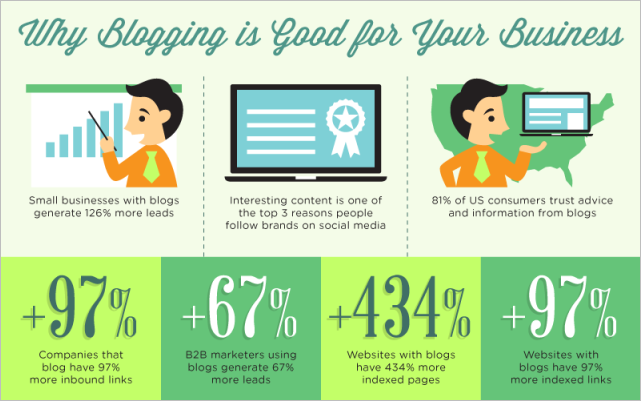
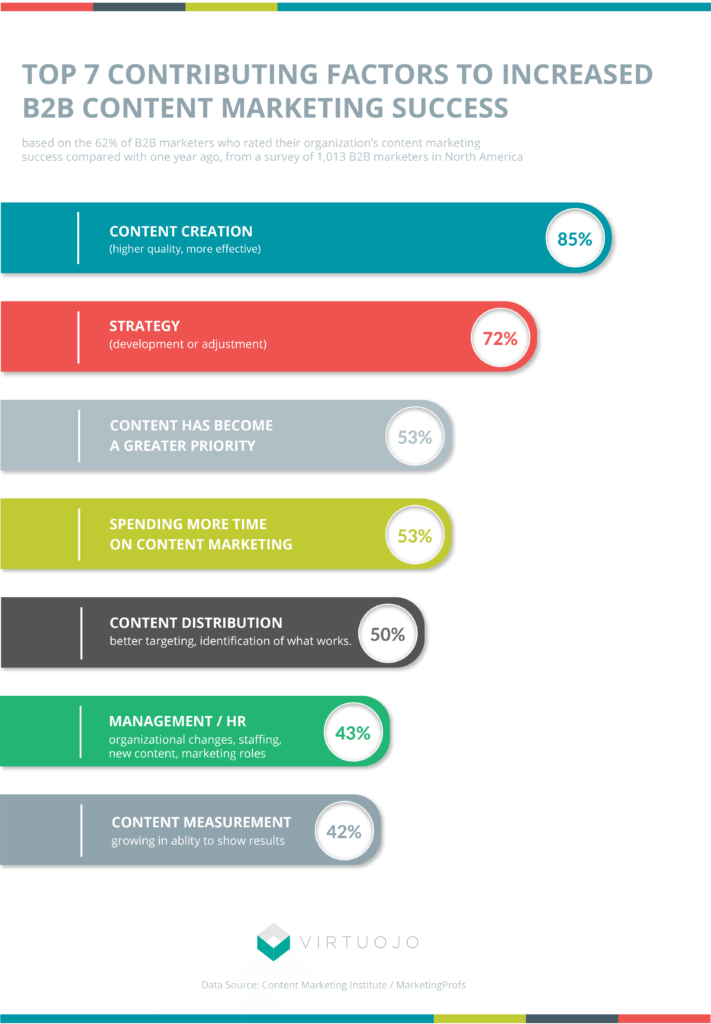
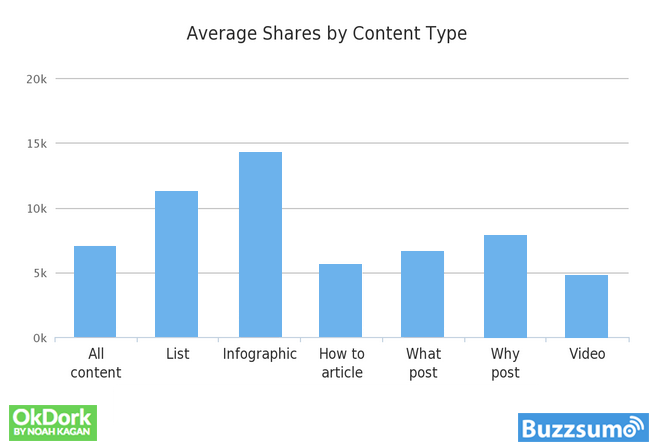
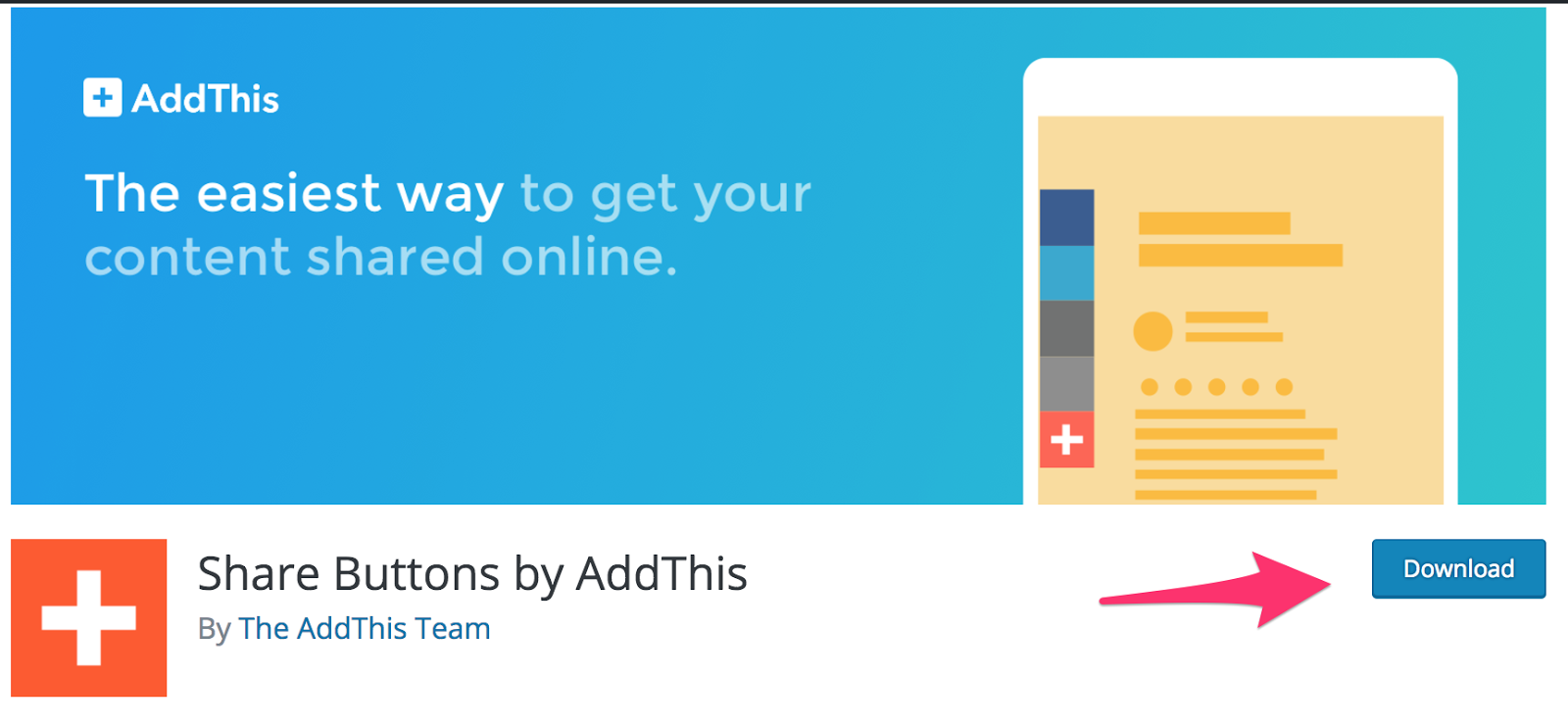
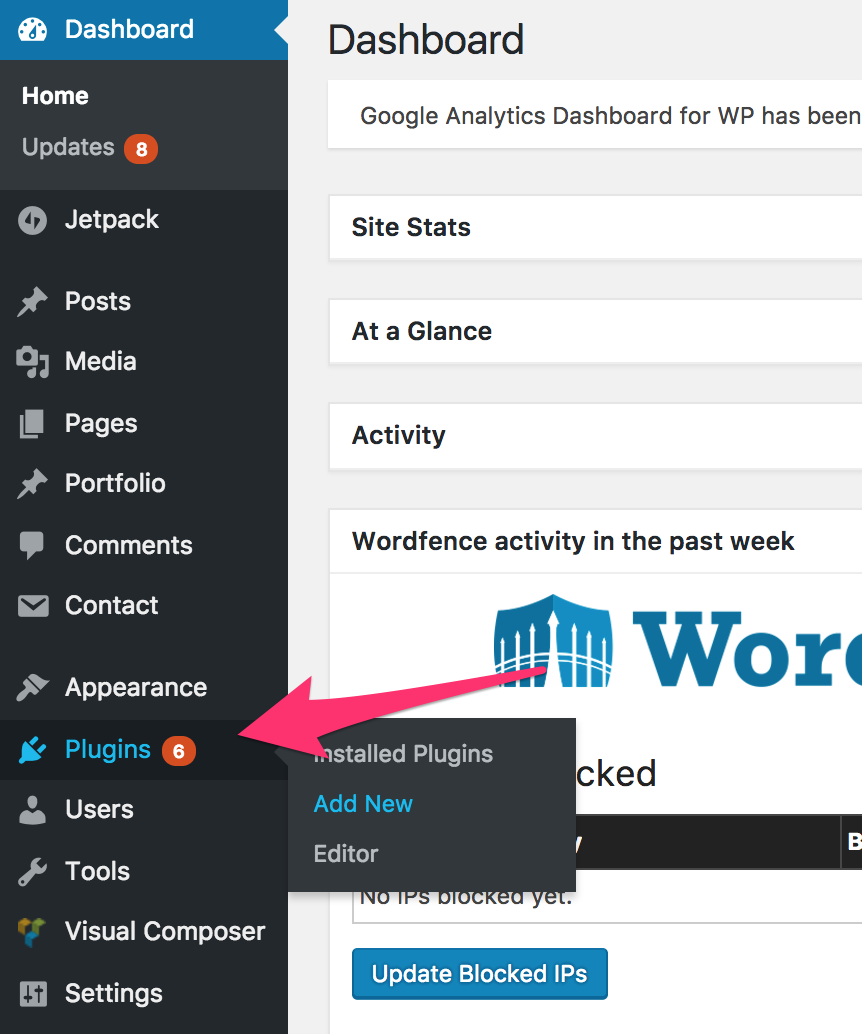

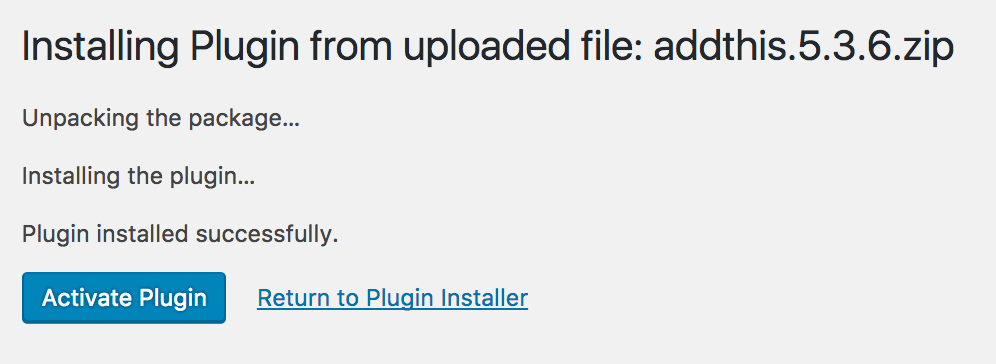
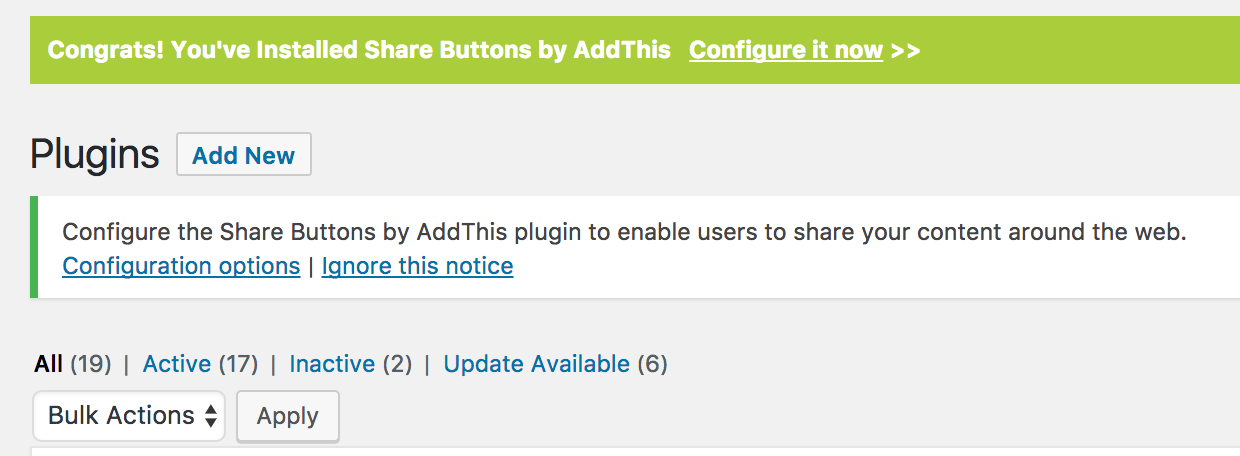
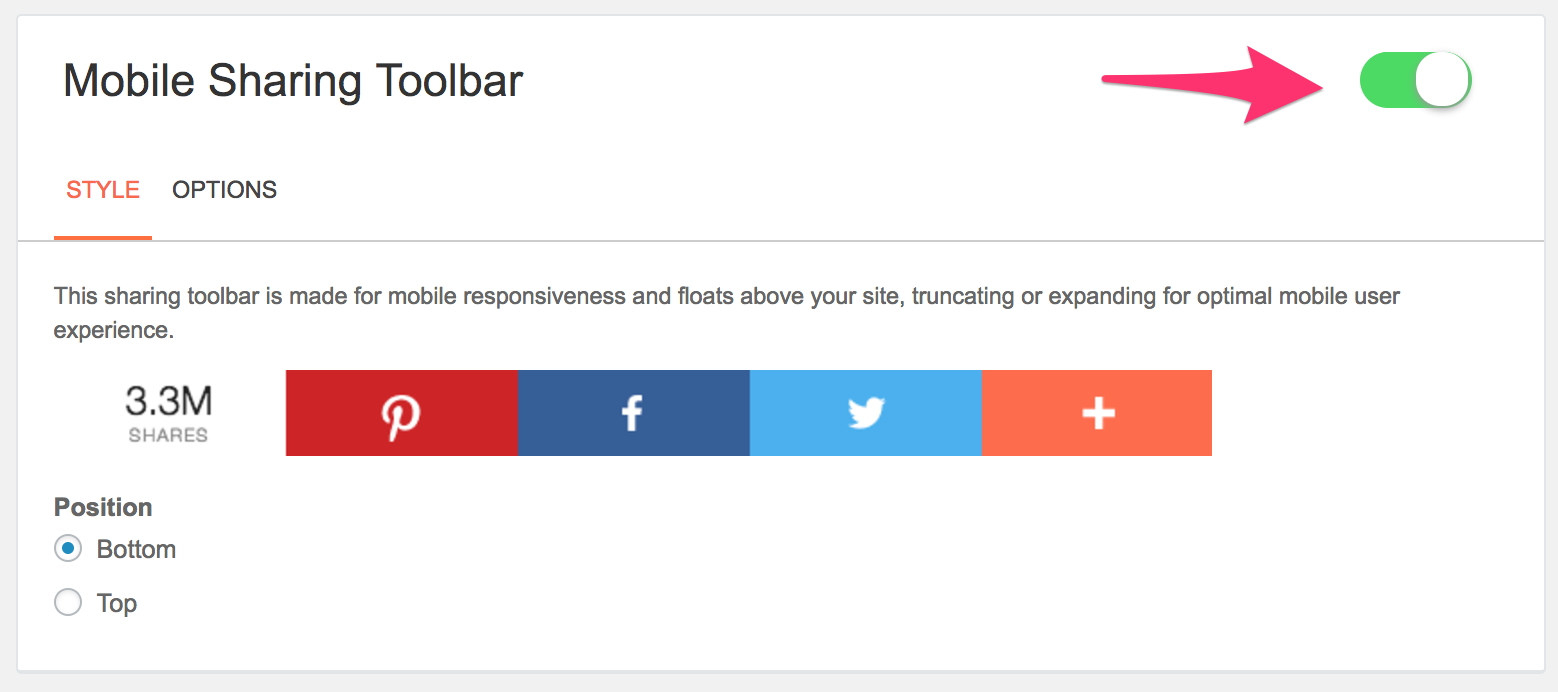
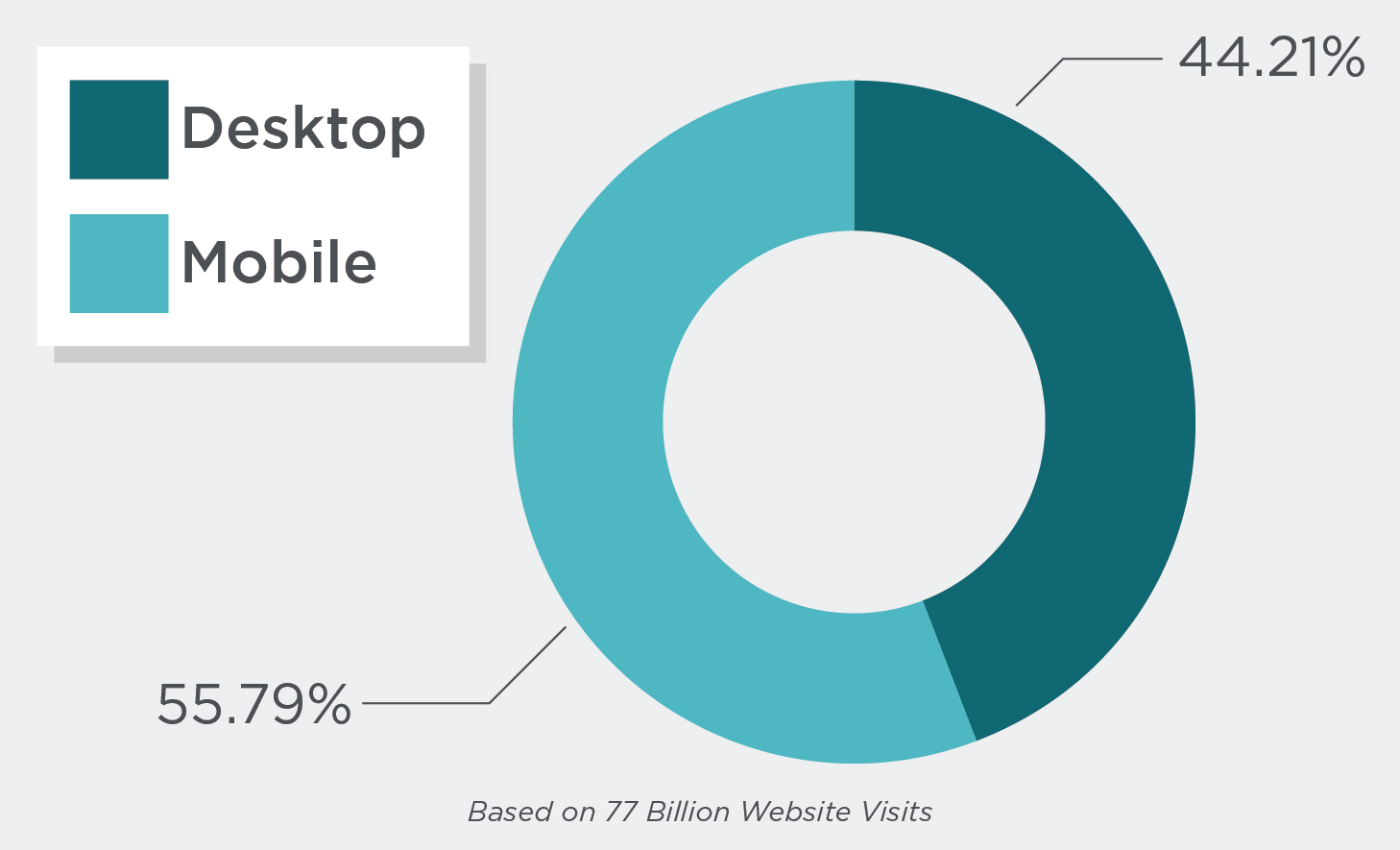
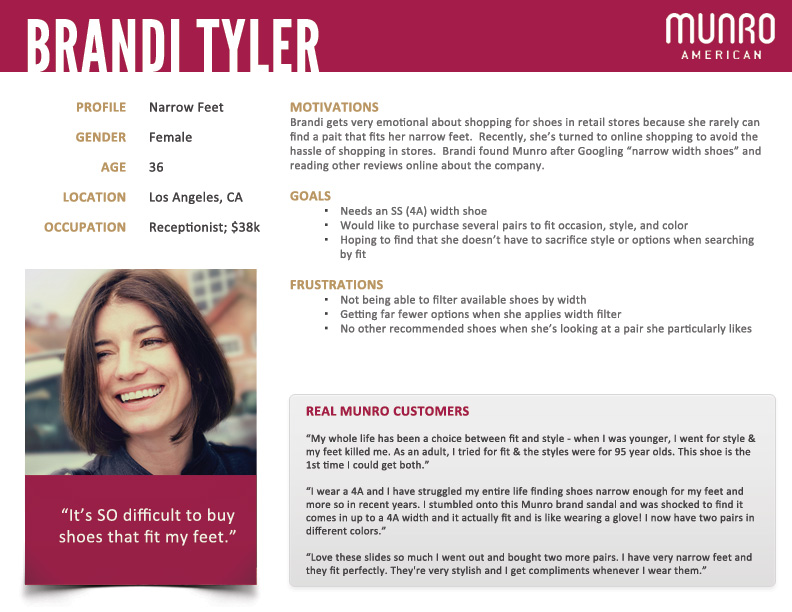
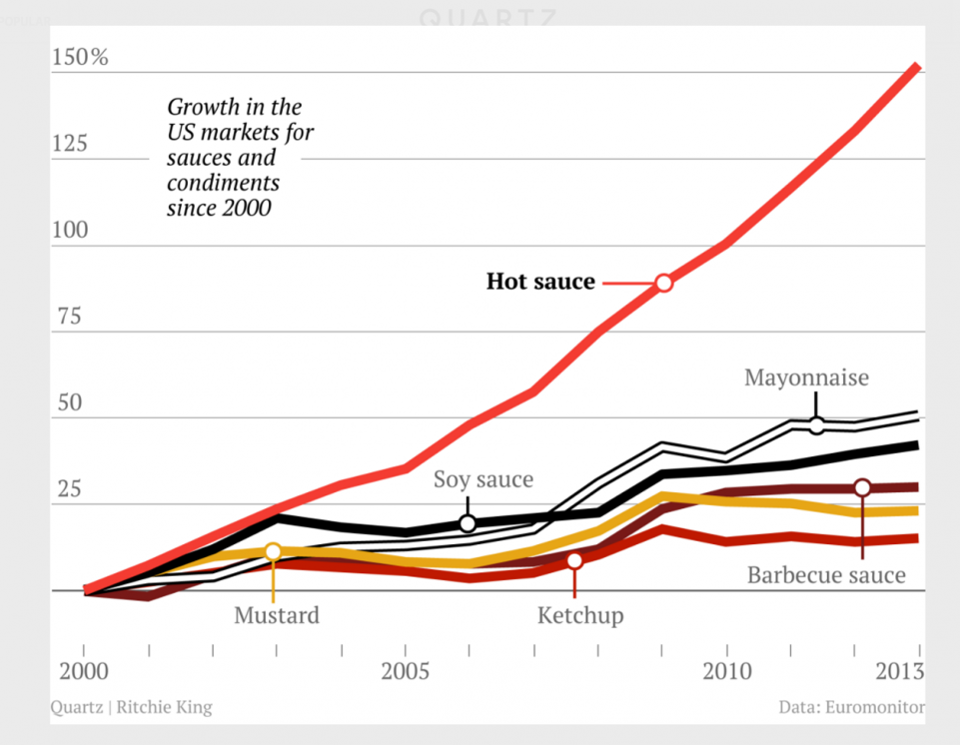
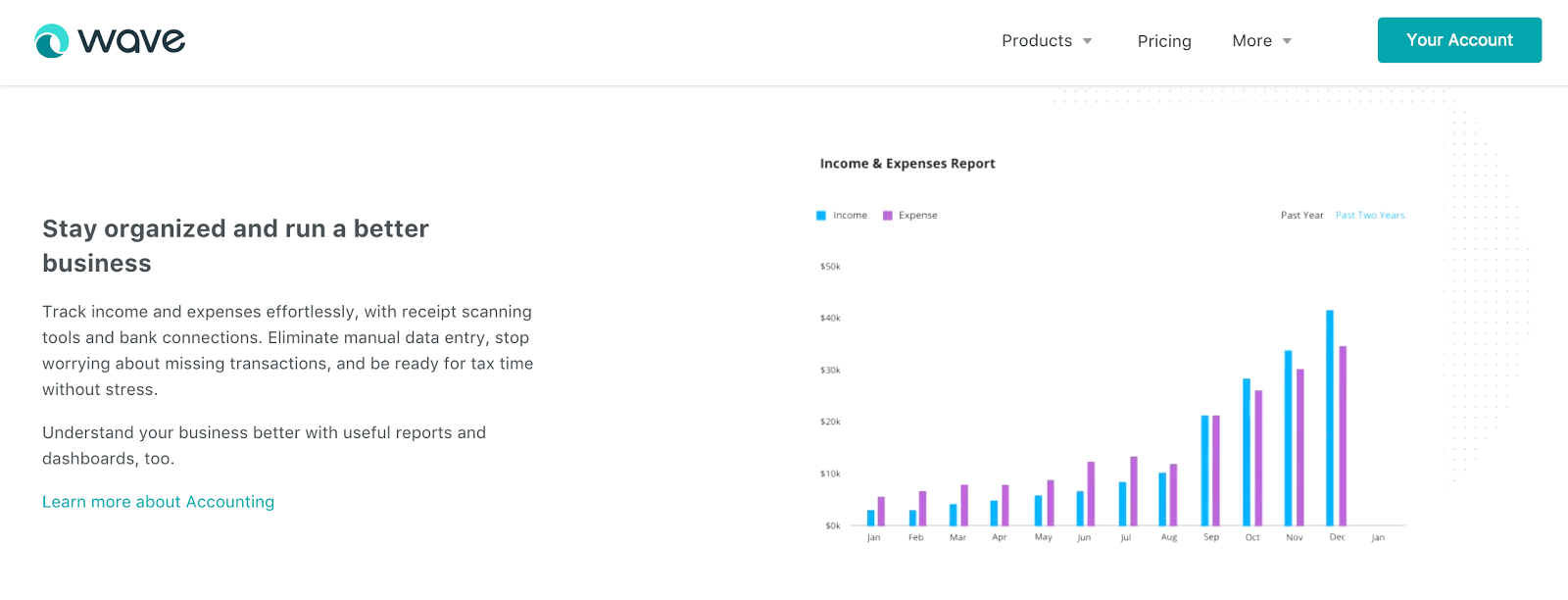
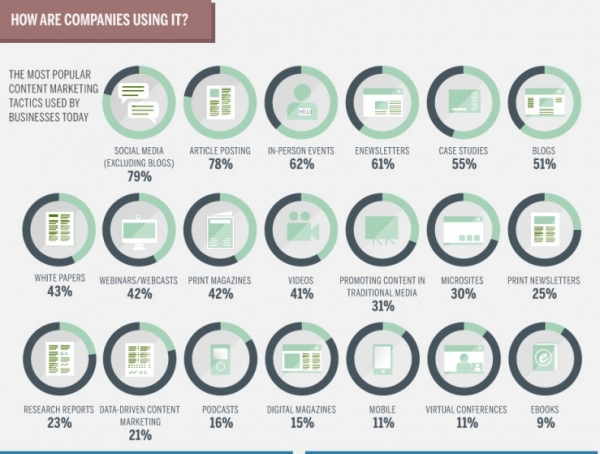
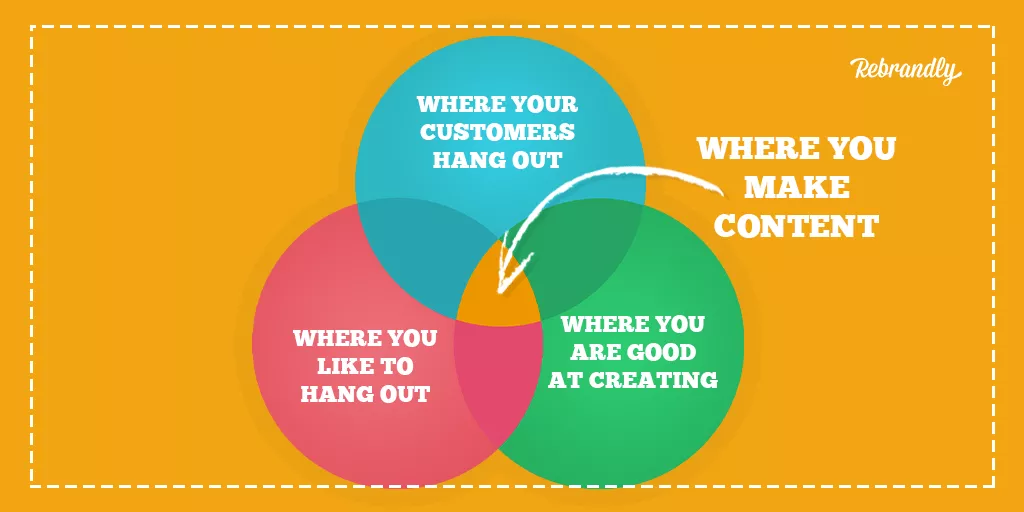
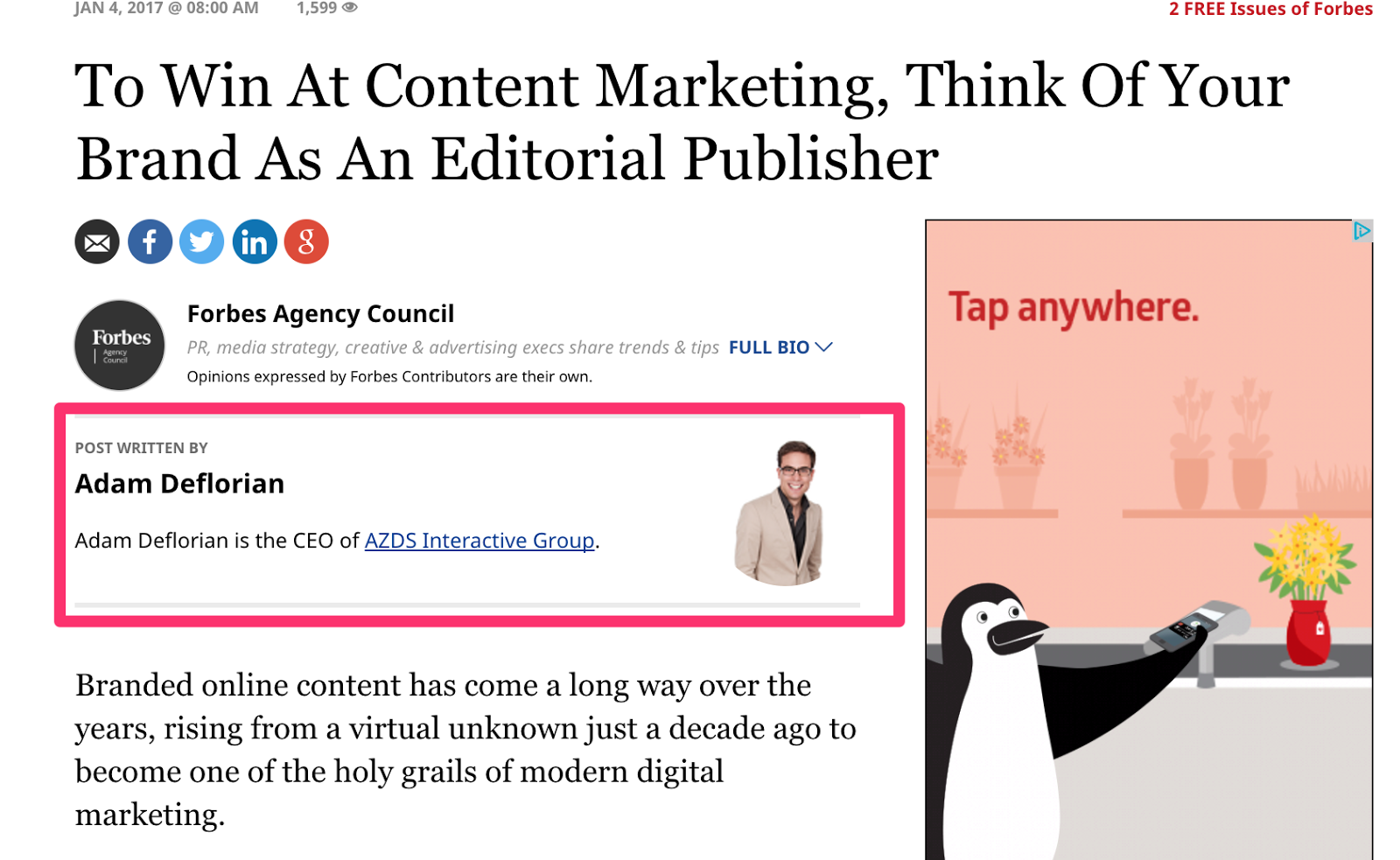
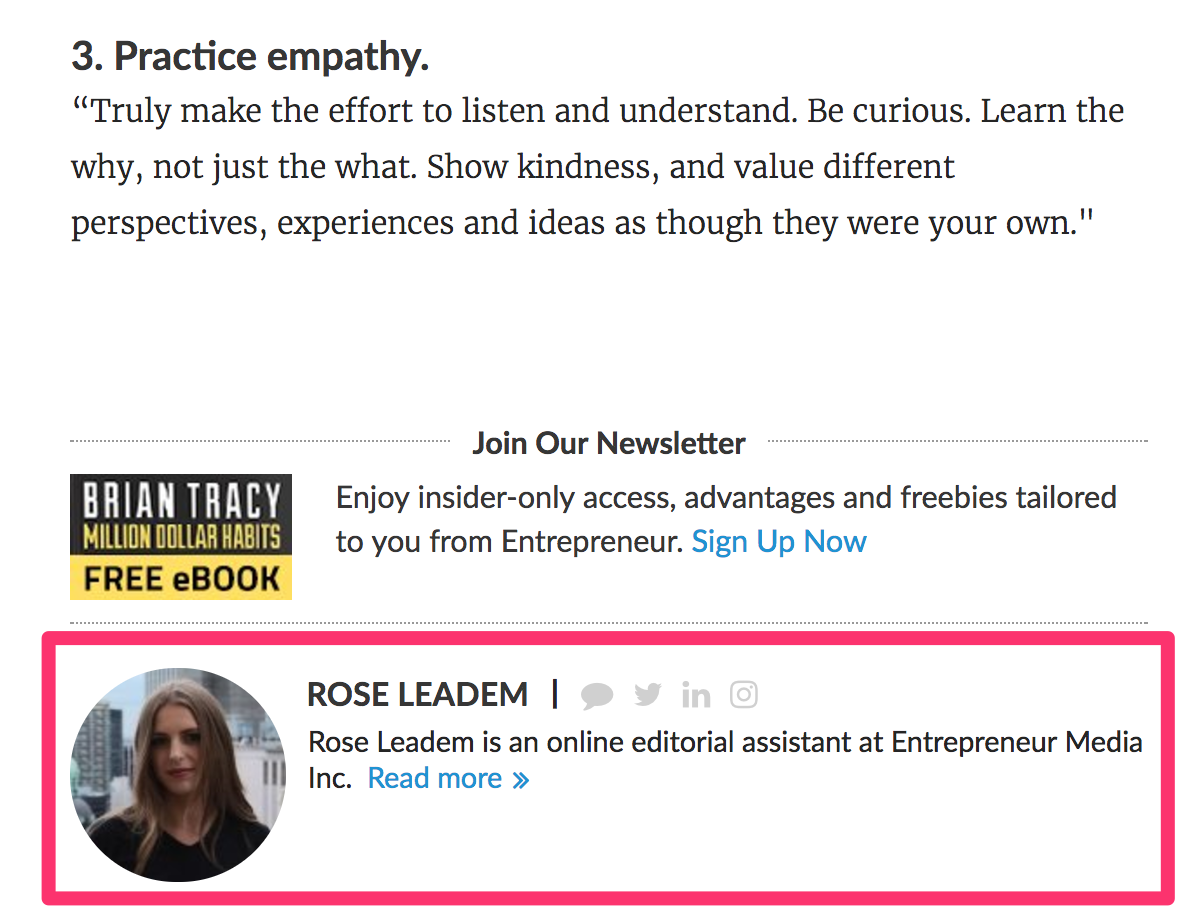

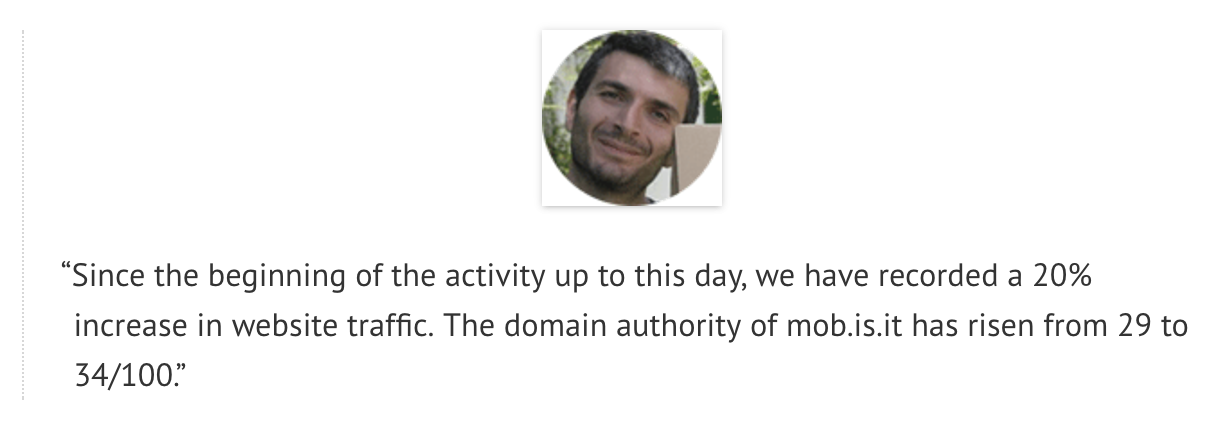
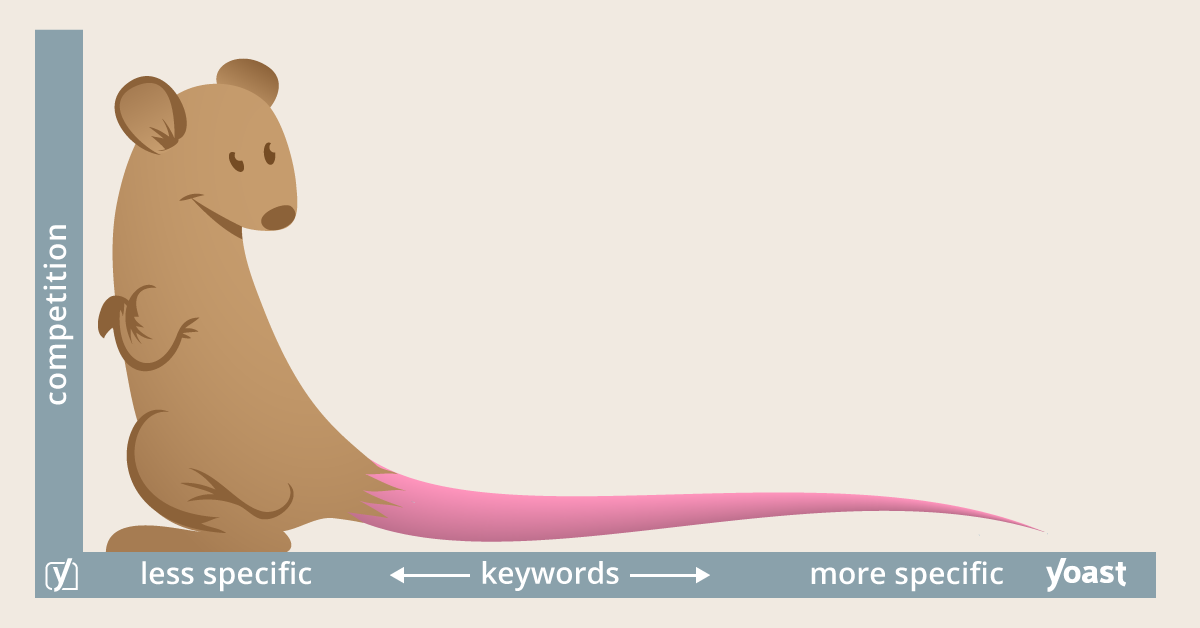
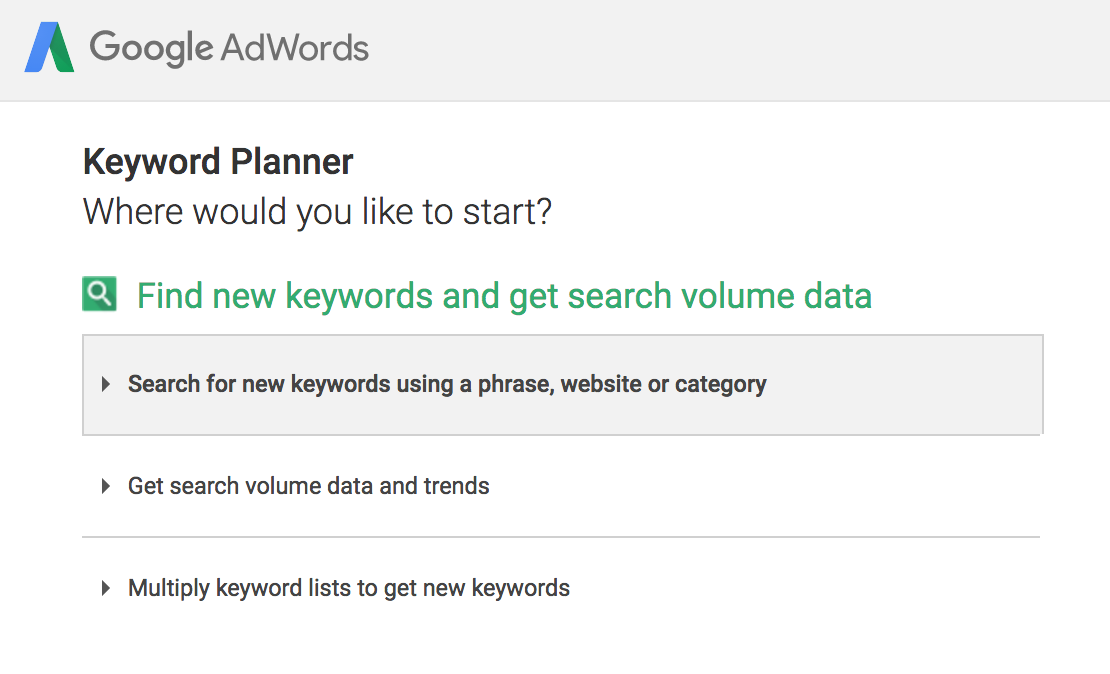
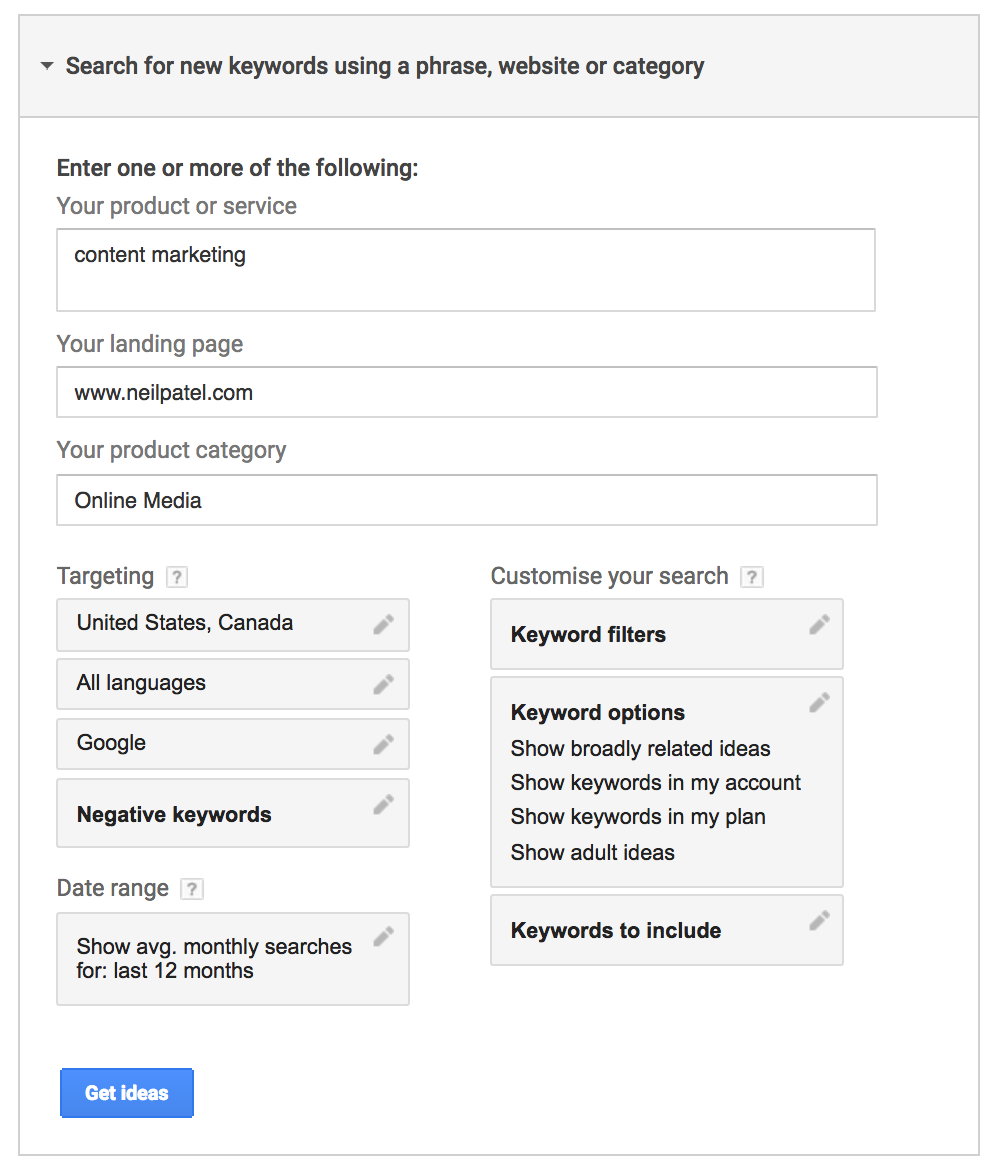
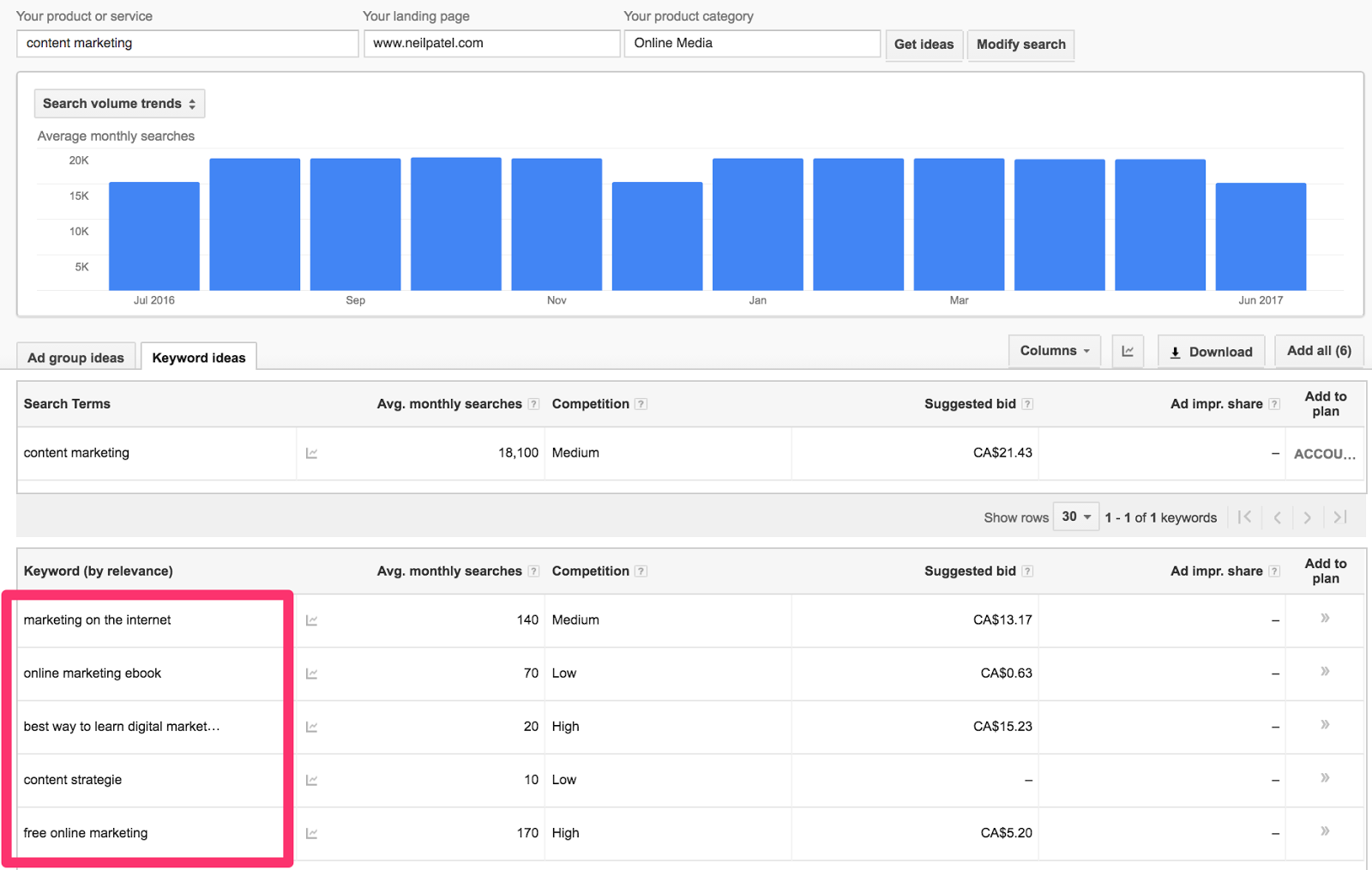
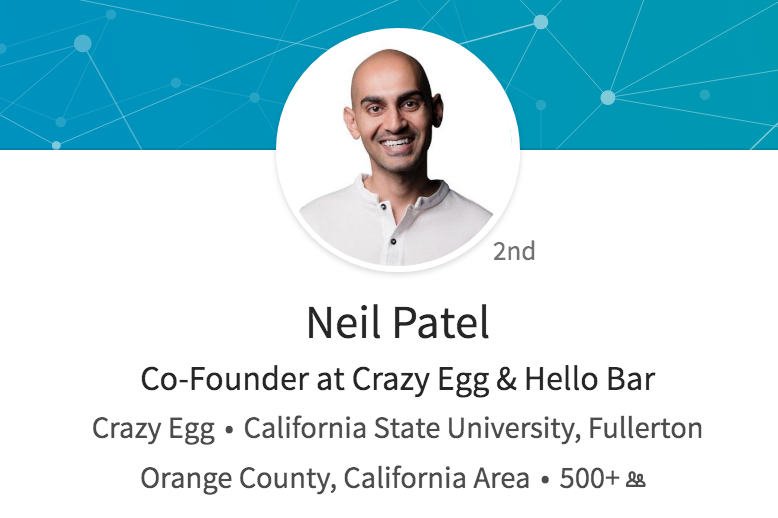
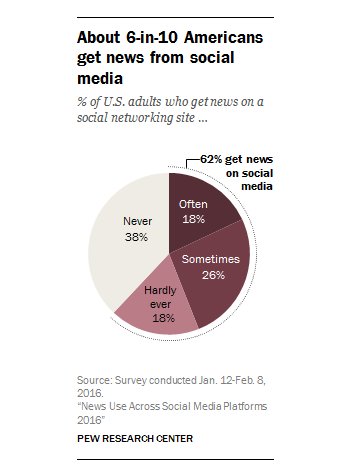
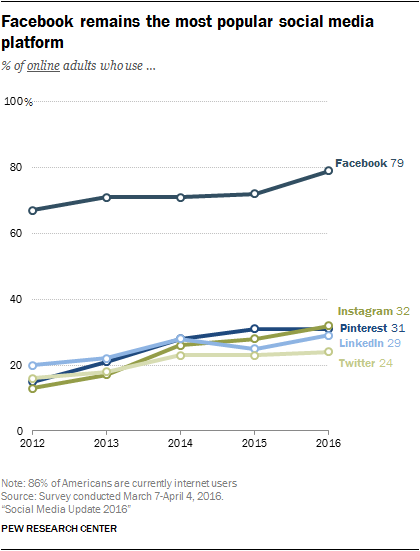

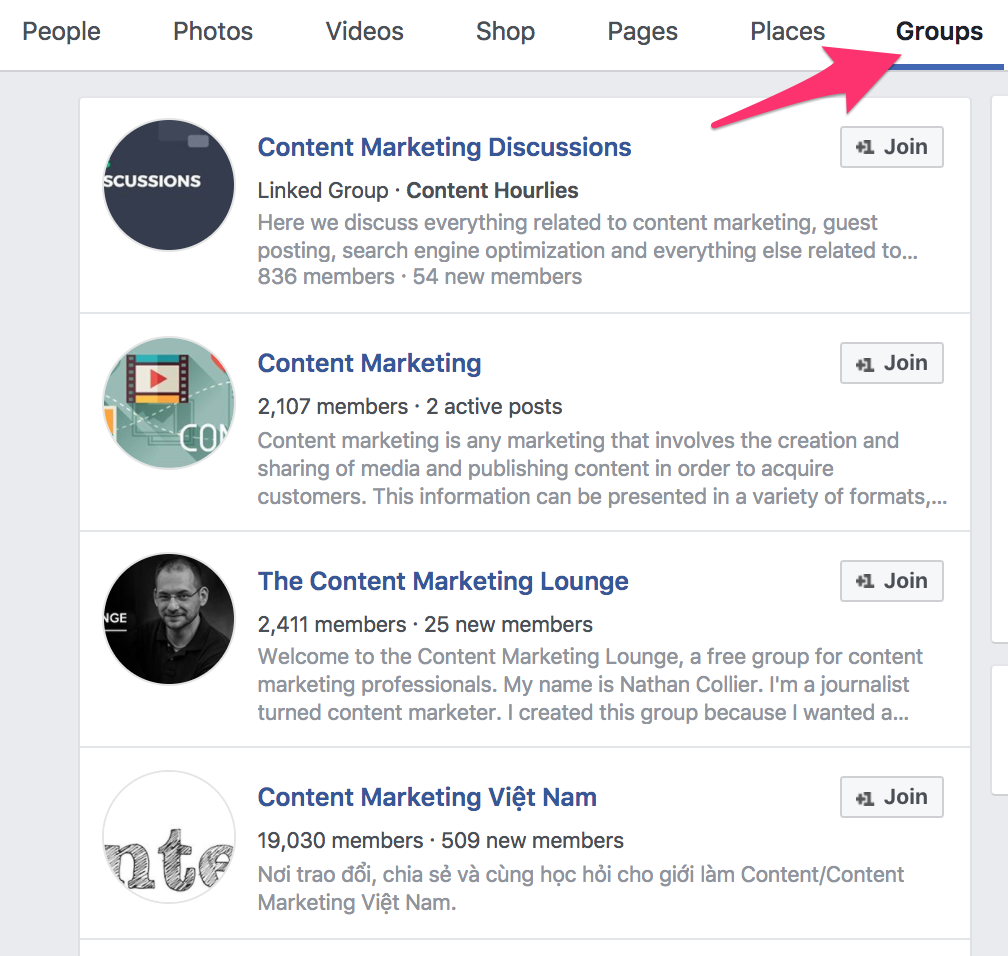

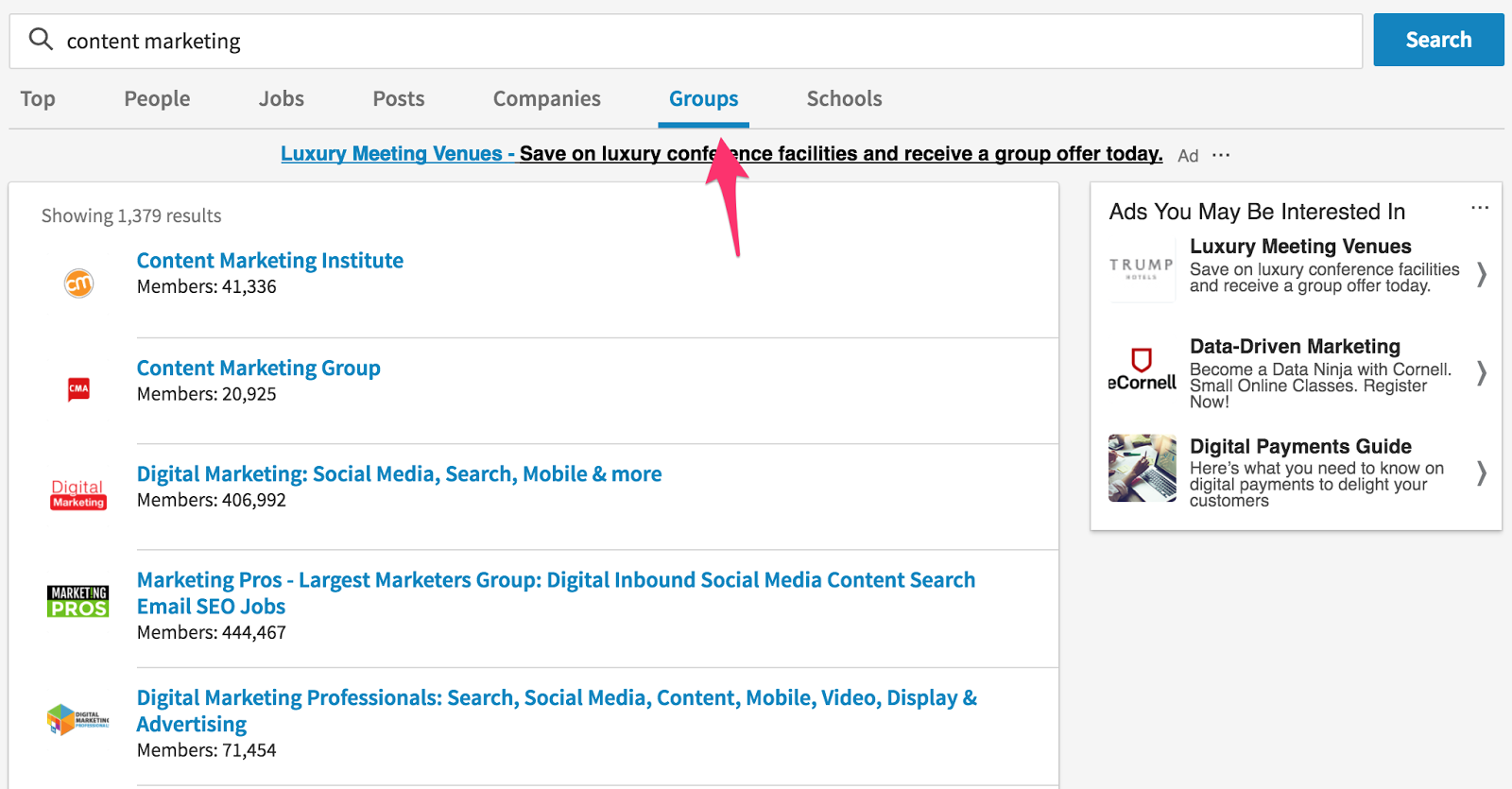
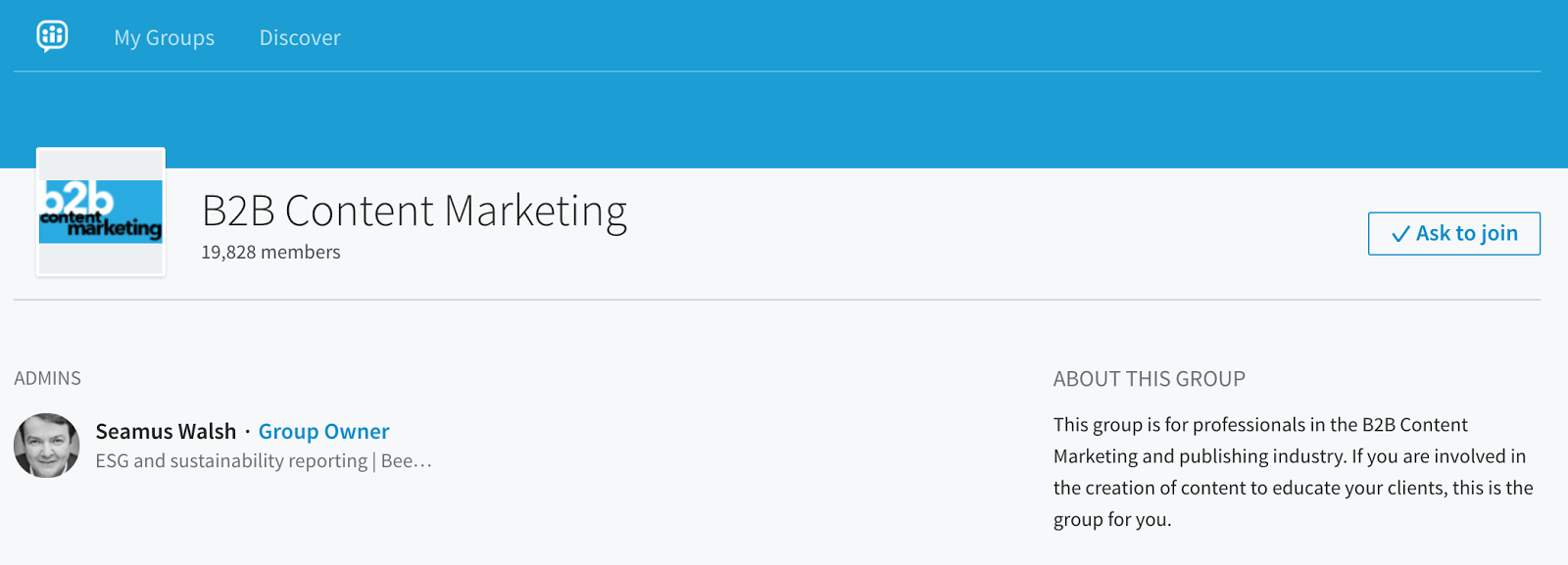
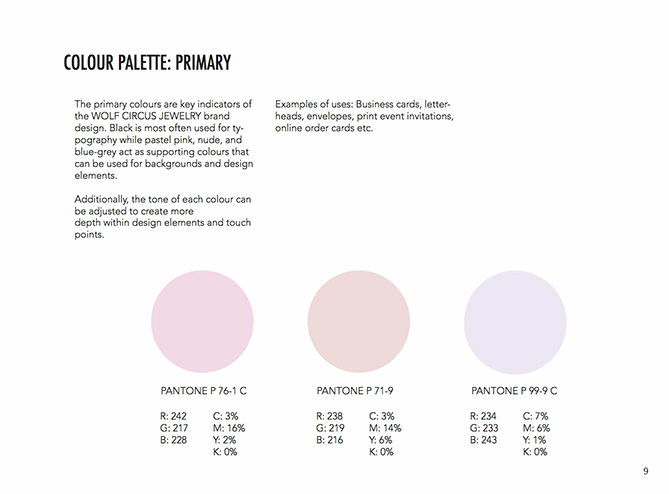

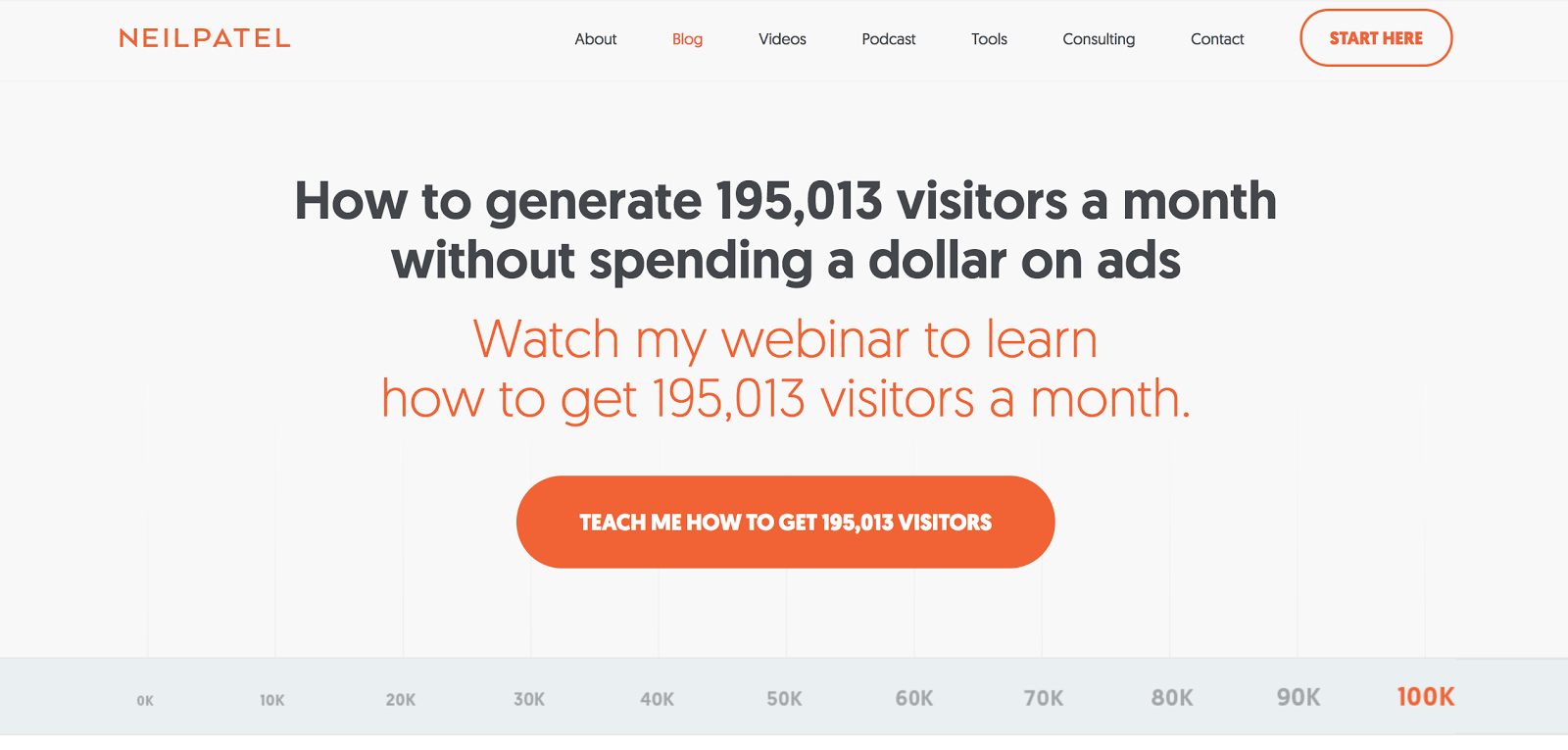
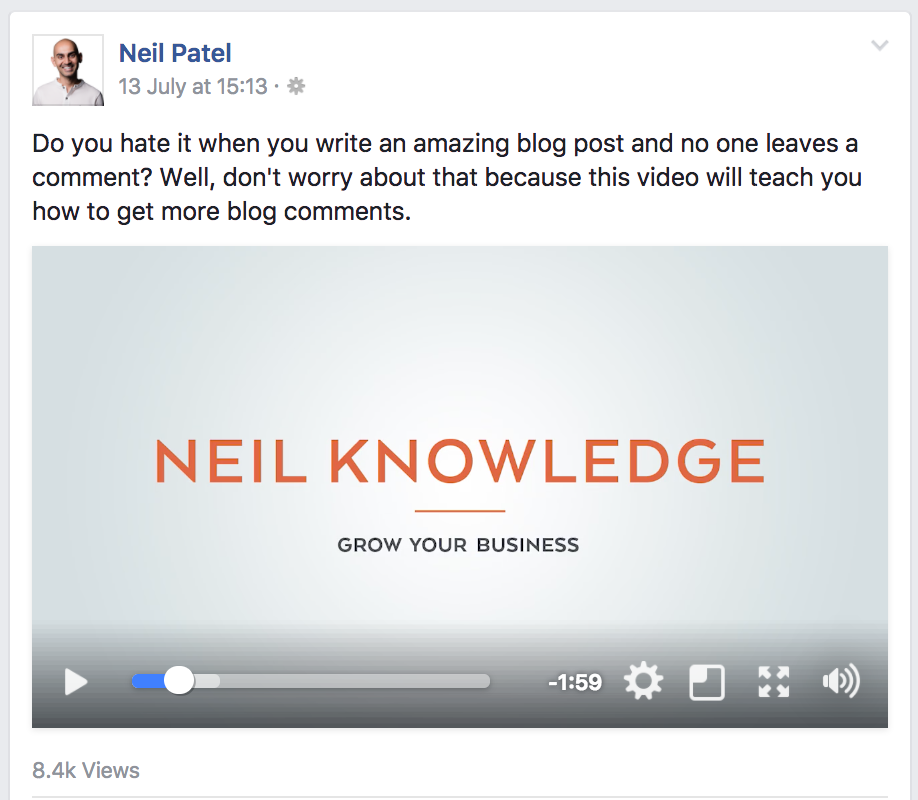
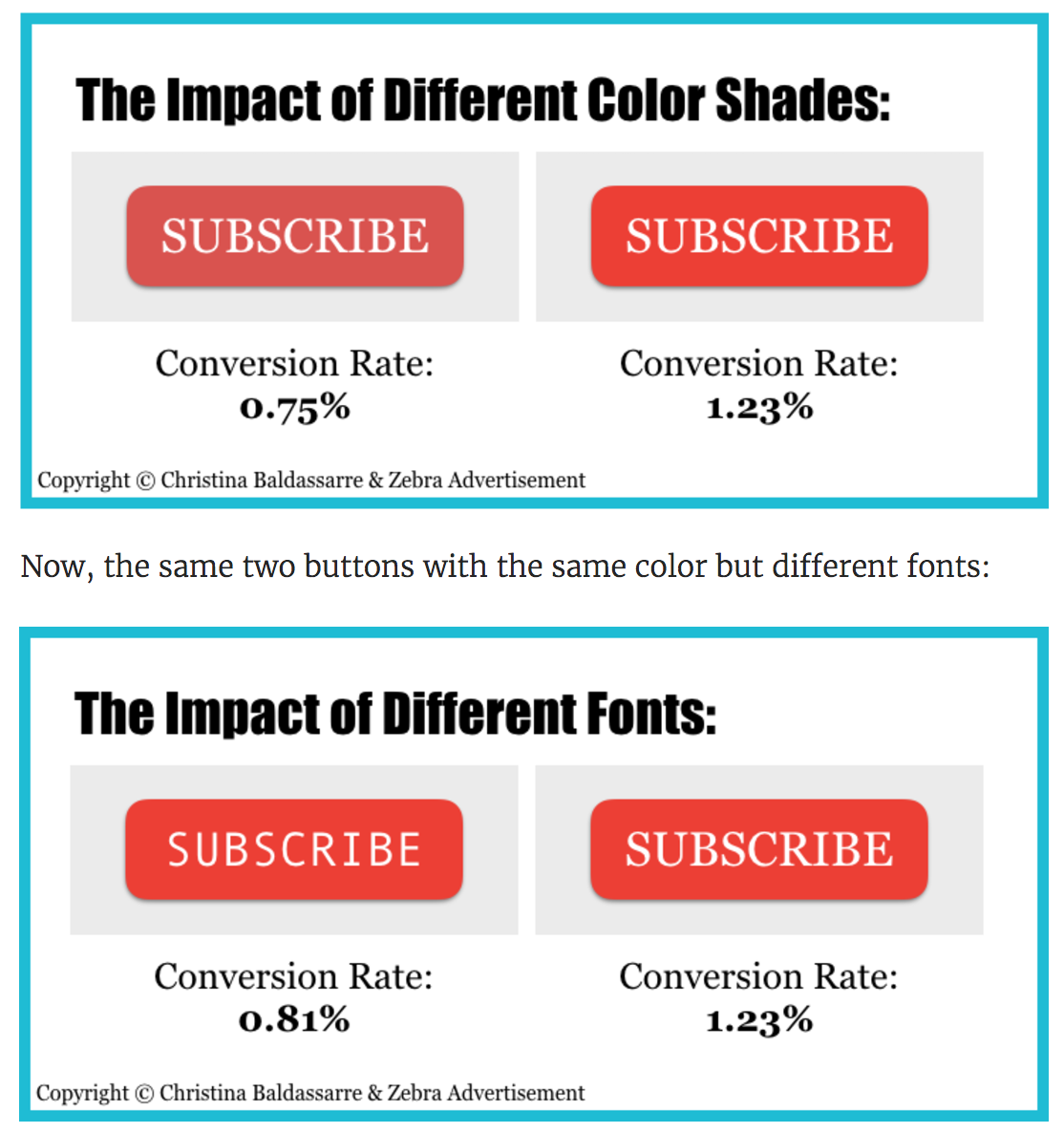
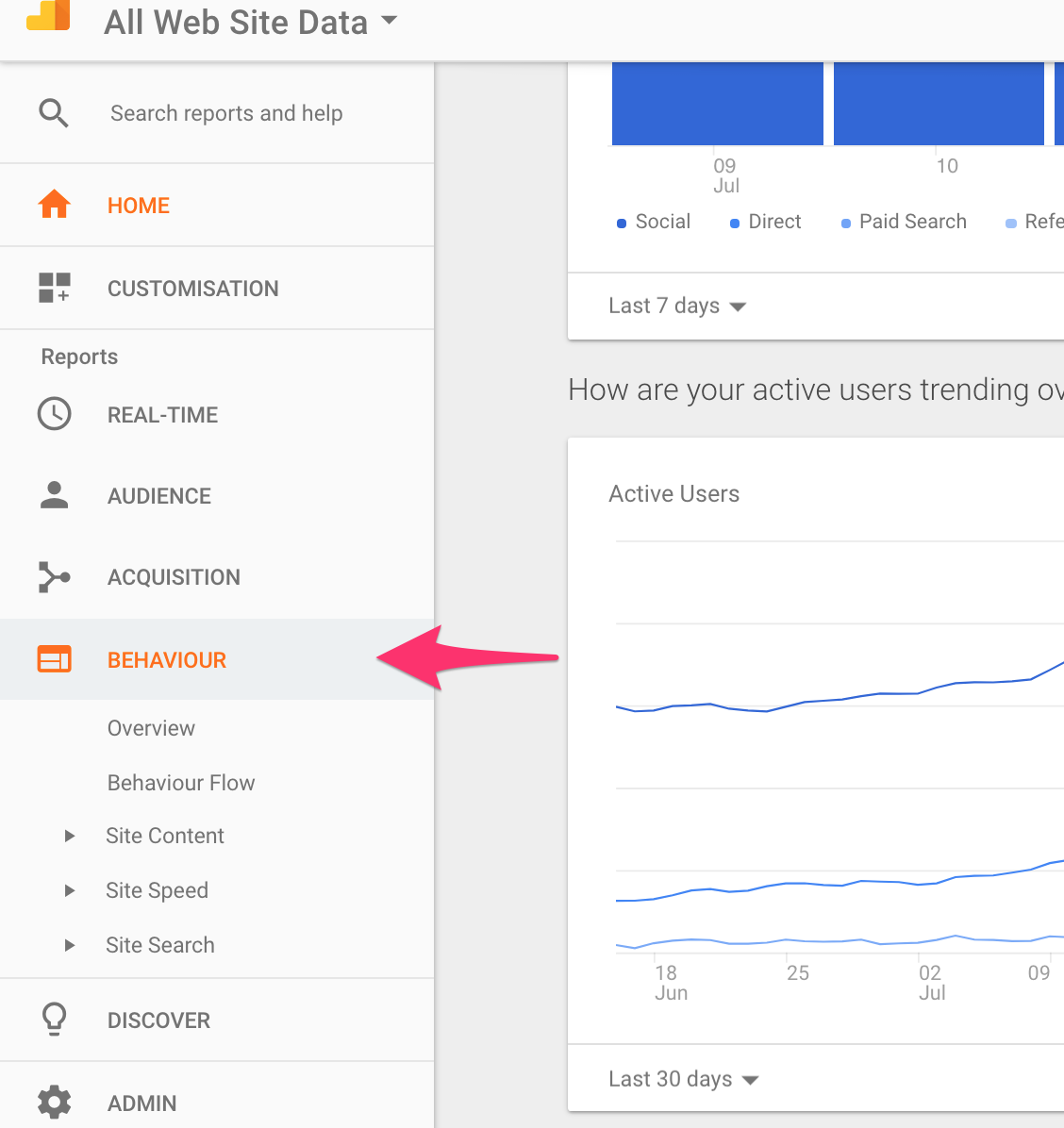
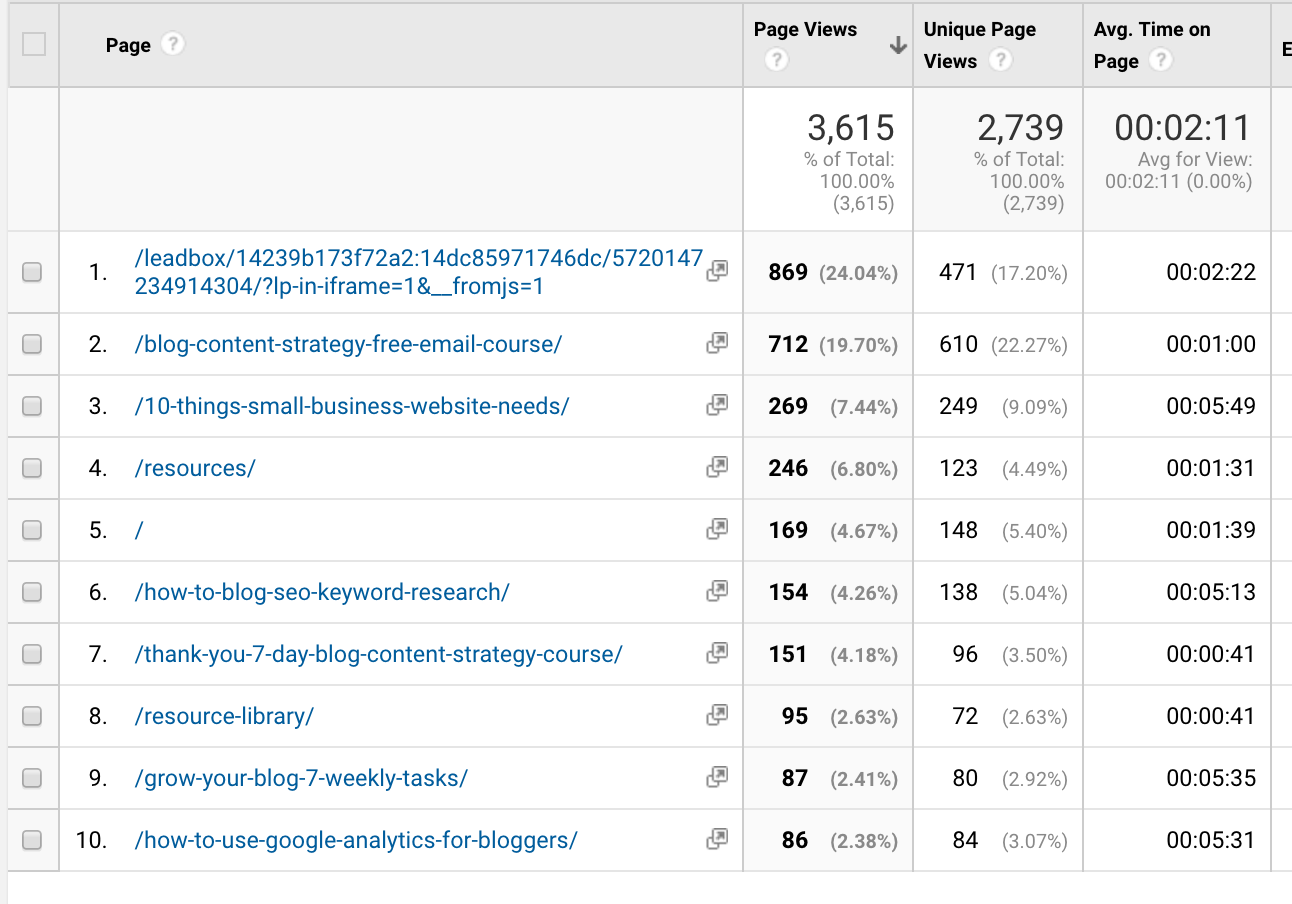
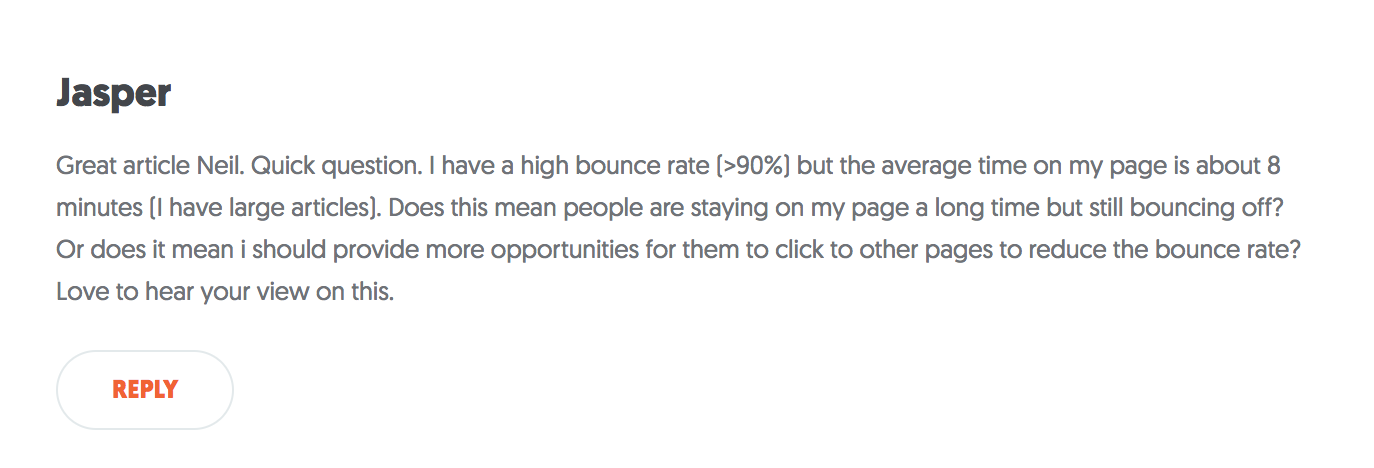
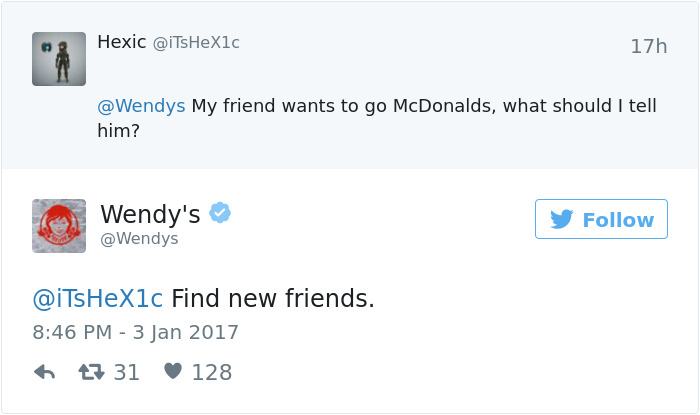

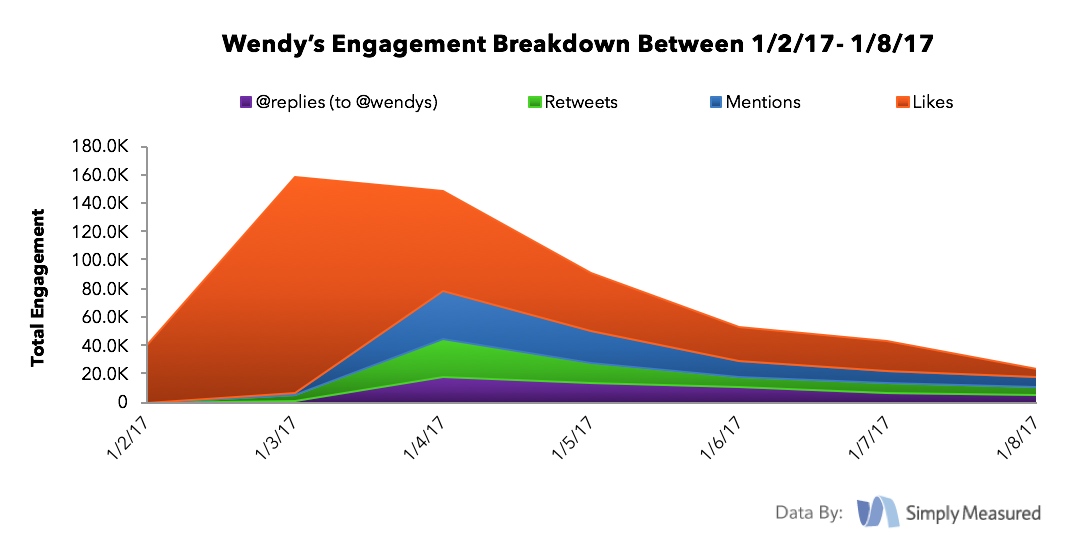
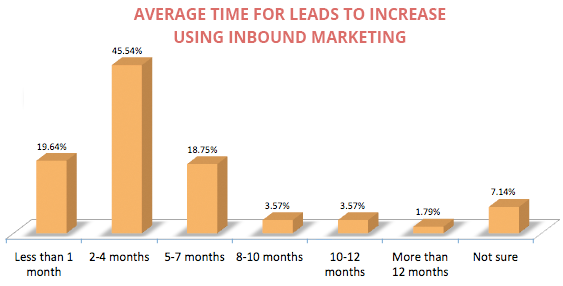
Comments (18)